future of transport
description: the advancements and innovations expected to occur in transportation technologies, potentially including electric vehicles, autonomous cars, and high-speed rail.
44 results
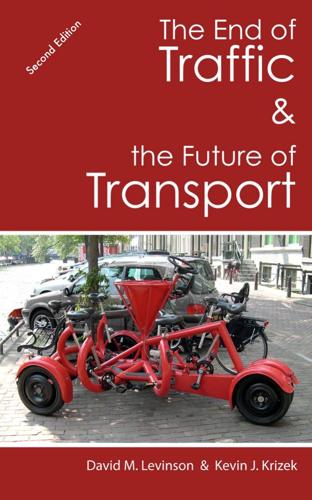
The End of Traffic and the Future of Transport: Second Edition
by
David Levinson
and
Kevin Krizek
Published 17 Aug 2015
The mountain analogy implies society cannot climb to the peak of the next technology in the same market niche (for instance, serving daily transport needs) until it climbs at least partway down the first. One can imagine a technological helicopter or zip line, or leaping off the peak (abandoning existing functional technology, rather than just depreciating it over time) to accelerate transformation, but such sudden changes are rarely wise and even less politically acceptable, with entrenched interests having accumulated power desirous of maintaining (or expanding) the status quo. If the future of transport does not involve more information technology and more automation, we will be both surprised and disappointed. Its exact shape and character is hard to pin down but will be rapidly evolving.
…
Redeeming Transport We title this book The End of Traffic and the Future of Transport. Vehicle travel in fully industrialized countries is falling, slowing, or stagnant.328 Per-capita vehicle travel in the US is roughly where it was in the late 1990s. And vehicle miles traveled, the number of miles that cars move, is roughly where it was in the mid 2000s. The significant change is that these trends follow 90 years of steady, almost uniform increases in the amount of automobile traffic. Barring a few exceptions owing to economic downturns or energy shocks, vehicle miles traveled increased almost every year in almost every setting for an entire century!
…
Thus, the privately owned automobile will remain important for rural, small town, and suburban markets that cannot justify the fixed cost of high capacity transit services nor have a thick enough market to enable vehicles on-demand within a timeframe customers will accept. However that auto or light truck will be automated, and will eventually be electric as well. ———————— "There is an urgent need to move beyond the techno-determinism that surrounds discussions about innovation in transportation, that have become bogged down in a Silicon Valley versus City Hall narrative, the innovate upstart versus the hidebound local regulator." — Anthony Townsend340 In previous chapters we described what has happened, or more speculatively, what might happen. The future of transport has always had more unknowns than knowns. Its overall character depends on many moving parts, and primary among them is how quickly forms of innovation take root and the changing density of land use activities.

Road to Nowhere: What Silicon Valley Gets Wrong About the Future of Transportation
by
Paris Marx
Published 4 Jul 2022
And so I then move on to outline the evolution of Silicon Valley and how it fused its faith in technology to neoliberal economics to hide its deep links to the US government and military. Its adherents’ belief in the power of technology alone to transform any industry or system for the better, without considering the political and social implications, is the product of that techno-utopian ideology. In the central chapters of the book I apply those histories to critically dissect some of the most prominent of tech’s proposals for the future of transportation and cities. I cover electric vehicles, ride-hailing services, and self-driving cars; the Boring Company’s tunnel system and Uber’s vision for flying cars; along with the implications of micromobility services and the delivery robots increasingly staking a claim to the sidewalks.
…
Road to Nowhere Road to Nowhere What Silicon Valley Gets Wrong about the Future of Transportation Paris Marx First published by Verso 2022 © Paris Marx, 2022 All rights reserved The moral rights of the author have been asserted 1 3 5 7 9 10 8 6 4 2 Verso UK: 6 Meard Street, London W1F 0EG US: 20 Jay Street, Suite 1010, Brooklyn, NY 11201 versobooks.com Verso is the imprint of New Left Books ISBN-13: 978-1-83976-588-9 ISBN-13: 978-1-83976-591-9 (US EBK) ISBN-13: 978-1-83976-590-2 (UK EBK) British Library Cataloguing in Publication Data A catalogue record for this book is available from the British Library Library of Congress Cataloging-in-Publication Data A catalog record for this book is available from the Library of Congress Typeset in Sabon by MJ & N Gavan, Truro, Cornwall Printed and bound by CPI Group (UK) Ltd, Croydon, CR0 4YY For Jacques and Christina Contents Introduction 1.
…
Where changes do happen, it is not uncommon that they benefit only the wealthy while excluding the poor and the working class. This is untenable, and must change. Finally, I outline what we should take away from the failings of the technological solutions to our urban crises, and lay out a vision for a more equitable future of transportation and of urban life. That vision is not anti-technology. But it recognizes that technology is not the primary driver in creating fairer and more equitable cities and transportation systems; that will require much deeper and more fundamental change to give people more power over the decisions that are made about their communities. 1 How the Automobile Disrupted Mobility Throughout much of the world, the automobile dominates.
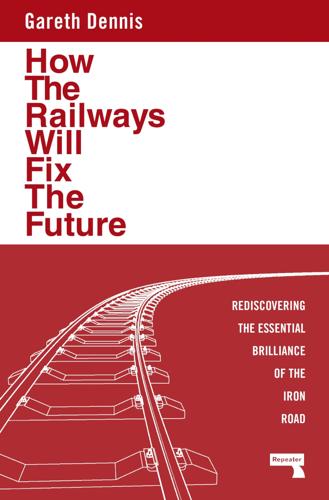
How the Railways Will Fix the Future: Rediscovering the Essential Brilliance of the Iron Road
by
Gareth Dennis
Published 12 Nov 2024
Battery electric vehicles may be the future of cars, but they are certainly not the future of transport. The proliferation of walkable cities, facilitated by the ineffectiveness of the car compared to rail-based alternatives, means that vulnerable people will be less reliant on social services to live independent lives, allowing those resources to be focused on those still in need. Disabled people will no longer be trapped by inaccessible public transport or reliant on driving or being driven. They will have access to the same opportunities as everyone else using public transport. The freedom afforded to everyone, including vulnerable or young people, can greatly improve our collective wellbeing and mental health.
…
The pipe it was intended to get visitors enthusiastic about had its most exciting moment on 9 November 2020, when two senior employees had what appeared to be a teeth-chattering ride from one end to the other at speeds barely above 100 mph. Hailed by some hangers-on as the exciting next step in the future of transportation, this was in fact the beginning of the end for the latest incarnation of vacuum tube transport. In 2023 the company was liquidated. I have, as many of you will realise, navigated us to the world’s only ostensibly functional and now former hyperloop test track. Because it is here that we can stand back, scratch our heads a bit and get a handle on why the railways serve as a powerful lens through which to view technologism. Technologism, or technology utopianism, can be characterised as an unerring belief in the power of technology to advance humanity, and it’s nothing new.
…
South Korea, with one of the most densely used passenger railway systems in the world, might well have ranked higher, but the lack of associated data prevents me from placing it on the rankings. Nevertheless, the recipe for success is plain to see. To really understand why railways must be the future of transport, we have to turn to the alternatives, understand the damage inherent in maintaining the status quo and see through the false choices offered to us instead. CHAPTER 1.4 THE ALTERNATIVES Car dominance If the railways are so good, then why did private motor vehicles take over as the dominant mode by the middle of the twentieth century?
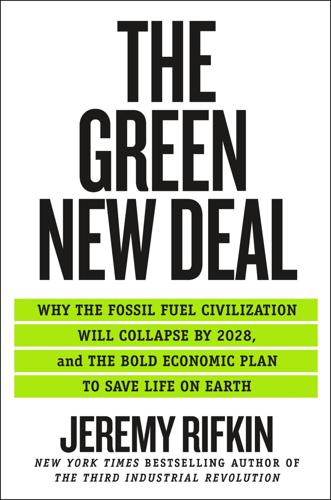
The Green New Deal: Why the Fossil Fuel Civilization Will Collapse by 2028, and the Bold Economic Plan to Save Life on Earth
by
Jeremy Rifkin
Published 9 Sep 2019
“Daimler Trucks Is Connecting Its Trucks with the Internet,” Daimler Global Media Site, March 2016, https://media.daimler.com/marsMediaSite/en/instance/ko/Daimler-Trucks-is-connecting-its-trucks-with-the-internet.xhtml?oid=9920445 (accessed February 7, 2019). 7. Ibid. 8. Steven Montgomery,”The Future of Transportation Is Driverless, Shared and Networked,” Ford Social, https://social.ford.com/en_US/story/ford-community/move-freely/the-future-of-transportation-is-driverless-shared-and-networked.html (accessed March 23, 2019). 9. Barbora Bondorová and Greg Archer, Does Sharing Cars Really Reduce Car Use? Transport & Environment, 2017, https://www.transportenvironment.org/sites/te/files/publications/Does-sharing-cars-really-reduce-car-use-June%202017.pdf (accessed March 23, 2019), 1. 10.
…
Taking this into consideration, Bank of America concludes that “electric vehicles will likely start to erode this last major bastion of oil demand growth in the early 2020s and cause global oil demand to peak by 2030.”2 Many of the lead cities in the world are already taking into account current projections on the swift transition underway in the auto industry from internal combustion vehicles powered by fossil fuels to electric vehicles powered by green renewable electricity. In April 2019, Los Angeles mayor Eric Garcetti made public a sweeping Green New Deal master plan that put the future of transport at the center of the city’s shift into a zero-emission economy. Garcetti announced that 25 percent of all vehicles in the city of Los Angeles will be electric by 2025, and 80 percent by 2035.3 These projections are striking for a city known for its car culture. The oil giants are not unaware of what all of this means for their industry.
…
Regions and industries should be motivated with generous carrots and equally onerous sticks to advance this critical transformation in the economy. The Curse of Black Gold In the last two years or so, the issue of stranded fossil fuel assets has been coming up with greater frequency in corporate boardrooms, financial institutions, government ministries, and think tanks around the world. This is not the normal conversation about the ebb and flow of markets and short-term government tweaks of economic policies, or simply about resetting agendas, but something more disconcerting that goes beyond even the occasional downturn into bear markets or deep recessions. There is a sense that something far bigger is occuring, affecting not only the global economy but our very existence and how we understand the world we live in, as well as the reliable future we took for granted.
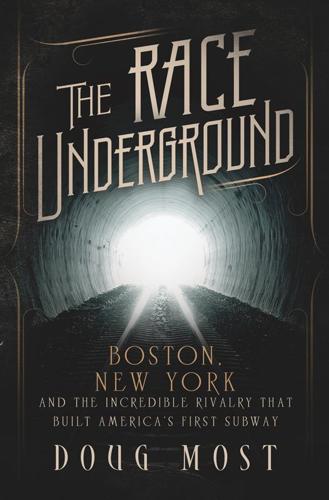
The Race Underground: Boston, New York, and the Incredible Rivalry That Built America's First Subway
by
Doug Most
Published 4 Feb 2014
It spared no words of self-praise. “The car fits the tube like a piston and travels both ways with the utmost regularity and steadiness. Nothing can be more gentle and pleasant than the start and stoppage; no jerking or wrenching of any kind is observable.” The article focused on the railway’s details, but in one line, it planted the notion that perhaps the pneumatic railway was the future of transportation. “It is probable that a pneumatic railway of considerable length for regular traffic will soon be laid down near New York.” Of the hundreds of inventions that filled the floor of the armory for six weeks, Beach’s pneumatic tube was the sensation that could not be ignored.
…
It was promised to the city that a transportation system on rails would be a dramatic upgrade for passengers, a smoother and faster ride than wooden wheels on cobblestone streets, and much easier for the horses. It took months for a route to be agreed upon, and on November 26, 1832, shouting spectators lined the downtown streets to come see what they had been told was the future of transportation. Flat iron strips had been fastened to blocks of stone embedded in the ground, and steel wheels were designed with grooves to ride directly on the rails. The new carriages, on the outside, looked no different than omnibuses except they were bigger, able to carry up to thirty people. But the three compartments each had their own entrance door, and the seats and sides were lined with a fine, plush cloth.
…
He wanted to dazzle them, not to mention distract them from any fears they might have of being underground with vermin and demons. He remembered the stories about how dark and miserable the London subway was. And he knew he had only one chance to convince New York that his subway was the future of transportation. He spared no expense, using more than $70,000 of his own savings to make sure the station was a place where people would actually enjoy waiting. The waiting room was enormous, more than 120 feet long, and it was lavish, with chandeliers, mirrors, a towering grandfather clock, a fountain with a basin stocked with goldfish, paintings, settees, and a grand piano.
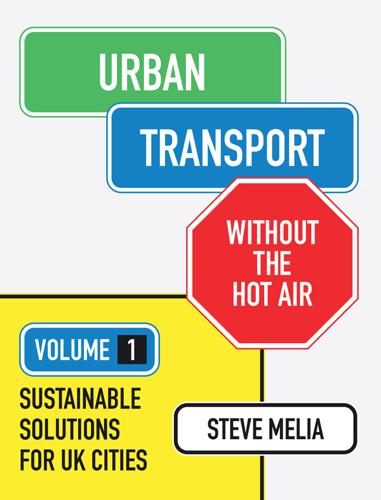
Urban Transport Without the Hot Air, Volume 1
by
Steve Melia
Page numbers in italic refer to figures A accessibility planning 222 air pollution 25, 30, 42, 227 airport expansion 33–4, 110 Amsterdam 62, 63, 67, 148, 158, 217 anti-collision technology 119 Ashford 81, 84, 85–6 Athens 227 autonomous vehicles 119, 214, 229–30 aviation air travel restraint policy 34 airport expansion 33–4, 111 business travel 10, 238 greenhouse gas emissions 13, 14 leisure flights 29, 33, 238 ‘tourism gap’ 29, 33–4, 34 B Baker, Norman 22 Barclays Cycle Superhighways 176 Basel 61, 62, 148 Bassam, Steve 185, 232 Bath 217 Baugruppen 157 Bayliss, David 165 Berkeley Group 56–7, 58 Big Brother Watch 27 Birmingham 99, 180 Bogotá 71 Boles, Nick 93 Bonn 63 Bordeaux 148 Bracknell 151 Bradley Stoke 94–5, 96, 96, 105, 107–8 Brighton 85, 86, 184–95, 221 bus use 186–8, 186, 189, 193, 194 car ownership 210 car-free development 189, 189 cycling 190, 191, 194 demographics 189, 192–3, 210 Green Party policies 190–2 housing development 189, 195 modal shift 192–4 park and ride 190–1 parking schemes 188 rail 194 travel patterns 185, 192–4, 193 walking 194–5 Bristol car-free development 161 cycling 63, 67, 72, 76, 78, 78 housing development 99, 99 pedestrianization 88, 208 road network 116–17, 117 trams 141 UWE transport 206–8 Bristol to Bath cycle path 72, 73, 74 British Social Attitudes Survey 59 Brown, Gordon 104, 173, 174 brownfield development 55, 98–9, 100, 101 Brundtland Commission 120–1 Buchanan report 112–16, 117–18, 150, 164, 182 bus gates 64 bus travel bus rapid transport (BRT) 40, 205, 211, 221 bus-to-bus changes, resistance to 41, 222 competitive practices 45–6 deregulation 23–4, 38, 43, 45–6, 193 diesel buses 42 European countries 43 fares 23–4, 24, 38, 44 free 41–2, 43 guided busways 90, 202, 204–5, 205 impact on car use 38, 41, 42, 106 low emission buses 42 national bus use 44 orbital bus services 41 peak-time commuting 42, 43 in permeable street networks 90 radial routes 41 real-time information 188 reregulation 223 speeds 41 ‘bus wars’ 45 business attitudes 134–5, 143–4, 147, 182, 191–2 business travel see work, travel to bypasses 113 C calculation fallacy 10–11, 37 Cambourne 105, 196 Cambridge 60, 76, 184, 192, 195–206, 219 bus use 204–5, 206 Cambridge Core Traffic Scheme 197–200, 197, 202, 204, 221, 235 car ownership 210 cycling 196, 200–4, 201, 202, 203 demographics 210 filtered permeability 202, 203 Holford report (planning strategy) 195–6 political consensus 206 public transport 204–6 rail 204 travel patterns 185, 200 Campaign to Protect Rural England (CPRE) 17–18, 232 car clubs 52, 155, 159, 222, 224, 227 car ownership Buchanan report forecasts 112–13, 112 demographics 162, 222 income and 53, 57 ‘normality’ of 26, 28, 238 parking restraints, impact of 49, 54, 55, 57–9, 110, 218, 219 predictor of car use 49, 50–3, 50, 229 public transport, impact of 58 reasons for not owning 53–4, 57, 180 rural areas 224 car purchase tax 21 car sharing 52 car use adults without cars 52–3, 52, 229 cost trends 21, 21, 24, 24 income and 53 measuring 51 ‘peak car’ 28, 211 personal freedom issues 25 public transport improvements, impact of 38, 39, 110 social costs 25 time savings 35 see also shared space car-free choosers 27, 28, 53–4, 161–2, 237–8 car-free developments 149–62, 219–20 parking overspill 157–8, 160 social benefits 159 see also under Brighton; Cologne; Freiburg; London; Louvain-la-Neuve carbon emissions 42, 119, 229 carbon trading systems 37 Cardiff 184 cars carbon emissions 14, 16, 19, 24–5 environmental-related problems 16 see also autonomous vehicles; electric cars casualties cycling and 27–8, 67, 69, 70, 75–6, 78 legal liability for 75–6 pedestrian 79 speed and 26, 27, 36 catchment populations 96 Churchill, Winston 24 climate change 13, 14, 110, 229, 236, 237 cost–benefit analysis (CBA) and 37 Climate Change Act 2008 14 Climate Change Committee 14, 15, 226, 229 cognitive dissonance 237 Collomb, Gérard 144 Cologne 148 Stellwerk 160 (car-free development) 158–61, 158, 159, 160 combined local authorities 181 commercial development 55, 56 Commission for Integrated Transport (CfiT) 50–1 Competition Commission 45 Confederation of British Industry (CBI) 30, 215 congestion 42, 211–14, 229 economic costs 215 options for dealing with 113–22, 212–14, 229–30 rich cities 215 tolerance of 118, 214 congestion charging 77, 122, 171, 174–5, 180, 181, 213, 214 connectivity 146, 222 Connex 46 Copenhagen 61, 69, 148 cost–benefit analysis (CBA) 29, 30, 35–7, 146, 228 courtesy crossings 86 Coventry 63 Cranbrook 107, 220 Crossrail 174, 178, 225 cycle hire schemes 71, 143, 143 cycle parking 68, 69, 130, 131, 135, 139, 140, 159 cycling 23, 60–78, 224–6 cycling culture argument 61, 70 European rates of 60, 61, 61, 62, 62, 63, 68–9, 182 flat terrain and 63, 70 government spending on 73 health benefits 30 hostility to 71, 225, 226 main roads 76 male dominance (UK) 67, 73, 75, 176, 226 pedestrianization and 67, 68, 87 in permeable street networks 90 protective clothing 67 push factors 70 reasons for not cycling 65, 67, 75 red lights, jumping of 68 and road casualties 27–8, 67, 69, 70, 75–6, 78 shared-space schemes 88 time cost 75, 76 traffic conditions and 63, 75 UK rates of 61, 71–2, 76 weather conditions and 63 Cycling Embassy of Denmark 77 Cycling Embassy of Great Britain 77, 203–4 cycling networks 37, 60, 61, 64, 71, 72 ad hoc design compromises 75 cycling contraflows 67, 176, 176 cyclist-only traffic light phasing 68, 139, 140 ‘Dutch-style’ infrastructure 77–8, 225, 226 European cities 64–5 filtered permeability 64, 65, 176, 176 hierarchy of provisions 74–5, 74, 77, 225 hostility to segregation 72, 73 hybrid paths 65, 66, 75, 77, 191 priority at junctions 68 safety auditors 65 segregated routes 71, 72, 73, 75, 76, 77, 82 selective road closures 67 separation of cyclists and pedestrians 65, 78, 225, 226 substandard provision 76, 76 cycling priority roundabouts 65, 66 Cyclists Touring Club (CTC) 71–2, 77 D Darlington Transport Company (DTC) 45 Daseking, Wulf 124 Davey, Ian 190, 191, 192 De Mello, Lianne 172, 191–2 Delleske, Andreas 157 demarcations, removal of 81, 85 Denmark cycling 61, 65, 66, 69, 75, 78 see also Groningen Department for Transport (DfT) 11 cost-benefit analysis (CBA) 35–7 and eco-towns, transport in 106 Economic case for HS2 47–8 Manual for Streets 75, 89, 91 National Cycling Strategy 72 and shared space 80, 84, 89 Department of the Environment, Transport and the Regions 98 deregulation 23–4, 38, 43, 45–6, 84, 168, 181, 193 Dickens Heath 105 diesel buses 42 disabled people 84, 86, 114, 139, 226 domestic tourism 34 Downs, Anthony 214 Drachten 82, 82, 83 driverless cars see autonomous vehicles Dutch Cycling Embassy 76–7 E Earl, Dave 197, 198, 200–1, 204, 206, 235 eco-towns programme 104–5, 220, 221 opposition to 106 transport facilities 106 Edinburgh 158, 161, 184 electric cars 14–15, 110, 119, 224, 226–7, 229 charging systems 15–16, 227 environmental campaigns local campaigning 231–5 personal travel behaviour 236–8 transport planners 235–6 environmental capacity 114 environmental sustainability, attitudes to 110 European best practice 120–2 see also Freiburg; Groningen; Lyon European travel patterns 120, 121 Exeter 161, 162 Exhibition Road, London 80, 80, 219 F false consensus effect 56 falsely positive responses to surveys 207 ‘family houses’ 103, 218 Ferguson, George 208 ferry services 34 filtered permeability vii, 64, 65, 90, 106, 113, 137, 175, 176, 176, 182, 197, 199, 202, 203 Filton 95–6, 96 First Group 47 flats 10, 98–9, 100, 218 proportion of housing stock 92, 100, 101, 102, 102, 103 social housing 103 ‘floating bus stops’ 190, 191 flyovers 114 footbridges 64 France local government 145 motorway networks 120 national planning policy 144–5, 227 tram systems 221 transport revenue stream 228 see also Lyon free market ideology 84 Freiburg 61, 62, 63, 64, 69, 122, 123–34, 219, 221 car ownership 132, 133, 157 cycling network 129–30, 130, 131 demographic profile 148 parking 132, 155, 157 pedestrianization 124, 124, 133 public transport, extension of 125–8, 125 road network 128 stellplatzfrei residential streets 155–6, 156 traffic restraint 128–9, 147 trams 126, 126, 127–8, 127, 132, 141 transport plan 123, 124–30 travel patterns 132, 133 urban planning 130–2 Vauban (car-free development) 155–8, 156 walking, fall in 147 French, Roger 187, 188, 193 fuel tax 10, 19, 20–1, 21, 213, 214 fuel tax protests 20, 213 G garden cities 106–7, 220 funding 106–7 see also eco-towns programme Germany car ownership and use 10, 49, 51, 51, 52 cycling 61, 63, 65, 69 motorway networks 120 transport decision-making 227 see also Freiburg Glasgow 184 GNER 47 good practice British see Brighton; Cambridge; London European see Freiburg; Groningen; Lyon governance issues 227–8 GPS route finding 118 greenfield development 17, 18, 55, 97, 100, 117, 212, 216–17, 220, 221, 234 land prices 103–4 greenhouse gas emissions 13–14, 14, 42, 119, 229 grid roads 89, 89, 117, 118 Groningen 61, 67, 122, 134–41, 147, 219 car ownership 134, 136, 140 cycle network 64, 137–9, 138 demographic profile 148 parking 136 traffic restraint 134–6, 136, 147 travel patterns 139, 140 Gross Domestic Product (GDP) 30 guardrails 81 guided busways 90, 202, 204–5, 205 H Hackney 175, 176, 182, 219, 225 Hammersmith Flyover 116 Hammond, Philip 22 Harlow 151 Hasselt 41–2 health and safety culture 65 heavy goods vehicles (HGVs) 121 Heffer, Simon 27 Heidelberg 63 Hendy, Peter 163, 166, 169, 171–2, 177, 182 high-speed rail (HS2) 22, 23, 37, 38, 47, 223 budgeted cost 47 customer projections 40, 40 low-carbon argument 47–8 home zones 156 Hong Kong 23 household size and composition 10, 17, 92, 101, 102, 106 housing crashes 94 housing densities 94, 96–7, 98, 99, 100, 101, 106, 151 housing development brownfield development 55, 98–9, 101 ‘car-free’ 57, 58 density guidance 98, 99 facilities, provision of 95 ‘fill in and spread out’ 117, 216 greenfield development 17, 18, 55, 97, 100, 101, 103–4, 117, 212, 216–17, 220, 221, 234 ‘knock down and spread out’ 116, 118, 164, 212, 216 localised employment opportunities 107–9 parking requirements and guidelines 55, 56, 98, 99 see also eco-towns programme; garden cities; New Towns programme; small new settlements; urban intensification housing prices 218 hybrid paths 65, 66, 75, 77, 191 hydrogen 16 I immigration 17 in-group favouritism 19, 26, 27 integrated transport networks 36–7, 71, 146, 147, 214, 216, 227 joined-up decision-making 227–9 inter-urban travel 117 International Air Transport Association (IATA) 33 Islington 57 Ivybridge 65, 105, 105, 107, 108–9, 108, 234 J jet packs 118 Johnson, Boris 77, 174, 176–7, 178 K Kent County Council 56, 177 Kent Fastlink 40, 40 kerbs 81 Kiley, Bob 173, 175 Klaauw, Cor van de 137, 139 Kleinmann, Hans-Georg 158, 159 L land prices 103–4 land use planning eco-towns programme 104–5, 220, 221 New Towns programme 94, 103, 104, 117, 150–1, 154, 221 post-Second World War 94 relationship to transport 92–109 see also housing development Lessing, Doris 231 Leuven 149 light rail networks 37, 141 Liverpool 208–9, 209, 210 Livingstone, Ken 163, 164, 165, 166–8, 169–70, 171, 173, 174–5, 176–7, 178, 181, 182, 183 Local Enterprise Partnerships 228 Local Sustainable Transport Fund 22 Local Transport Today 13, 235 localism 100 London 163–83 average traffic speeds 213 bus use 39, 42, 44, 46, 163, 168, 171–3, 181 car clubs 224 car ownership 58, 179–80, 180, 210 car use 62 car-free developments 161, 162, 179, 220 car-free households 58 commuting into 108, 194, 204 congestion charging 77, 122, 171, 174–5, 180, 181, 213 cycling 62, 62, 77, 163, 175–6, 176, 182, 224–5 demographics 178, 179, 210 Fares Fair policy 165–6, 171 GLC, abolition of 167, 168 Mayor’s Transport Strategy 170–1 Oyster card 44, 172, 173 parking policies 56–7, 58, 179 population 58, 169, 170 public transport network 62, 163–83 public transport subsidy 165, 181, 182 rail 177, 178 Roads Task Force 182, 220 shared space 80, 80 total traffic volumes 163, 180 trams 141 transport issues (1980s) 163–8 transport policy under Boris Johnson 176–7, 178 transport policy under Ken Livingstone 163–76, 178 travel patterns 164, 167, 178–9 Travelcards 165, 167, 168 underground travel 39, 62, 171, 173–4, 177 walking 163, 182 London Cycling Campaign 77, 175–6 London First 169 London Overground 177, 178 London Plan 169 London Regional Transport (LRT) 167, 168, 169 Louvain-la-Neuve 147, 148, 149–55, 150, 219 car ownership 152 car-free development 149–55 cycle network 150, 154–5 housing density 151 parking 152 rail travel 151–2, 154 shared space 150 travel patterns 152–3, 153, 154 walking 152, 153, 154 Lyon 122, 141–6, 147, 219 capital investment programme 147 car ownership 145 cycle hire 143, 143 cycle network 143, 144 demographic profile 148 parking 143–4 public transport budget 141–2, 142 traffic restraint 147 trams 141, 142, 144 transport tax 142 travel patterns 145–6, 146 trolleybuses 141, 142 walking, growth in 147 Lyons Review 107 M Maastricht 148 Major, John 72, 168 Malmö 61, 65, 148 Manchester bus travel 40, 41 Metrolink 40, 40, 41, 126–7 trams 10, 40, 126–7, 181–2 Marples, Ernest 112 Menzies, Bob 199 Merseyrail 209, 209 Milan 175 Milton Keynes 117, 118, 151, 152, 221 Mitchell, Gill 185, 186, 187, 189, 190, 195 mobility scooters 139, 226 modal shares 62, 74, 95, 121, 133, 134, 140, 146, 154, 164, 184, 185 modal shift 20, 48, 83, 87, 147, 178, 180, 192–4, 205, 207, 221 mode neutrality 20 Monderman, Hans 82, 83 Monopolies and Mergers Commission 45 Moody, Simon 84 Morton, Alex 93 motorway tolls 21 multi-level roads 115–16 multi-storey parking 115, 159 multiplier effects of public spending 31 Münster 148 MVA Consultancy 83, 85 myths of urban transport 9–10, 19, 29, 38, 49, 60, 79, 110 N Nailsea 151 Napier, Christopher 233–4 National Bus Company (NBC) 186, 193 National Cycle Network 65, 72 National Cycling Strategy 72, 73–4, 74 National Express 47 national parks 189, 191, 232–3 national pattern of transport movements 39, 39 national transport budget 73 Nelson 87–8 neoliberal ideologies 84, 93, 174 Netherlands cycling 60, 61, 63, 64, 65, 68, 69–70, 70, 75, 78, 82 motorway networks 120 shared-space schemes 85 transport decision-making 69, 227 see also Groningen Network Rail 47 New Towns programme 94, 103, 104, 117, 150–1, 154, 221 New Urbanist movement 75, 91 New York City 57 nimbyism 17, 97, 234 Norris, Stephen 177 North American street layouts 89, 89, 90 Northampton 63 Northstowe 220 Nottingham 193, 228 Nuremberg 156 O Odense 62, 68, 69, 148 oil crisis (1973–4) 69 out-group behaviour 27 Oxford 191 bus travel 42, 43, 193 cycling 196 Oyster card 44, 172–3 P Paris 170, 182, 183, 217, 227, 239, 239 park and ride schemes 42, 190–1, 197 parking allocated parking 56 charges 129, 143, 147, 207, 213 commercial car parks 219 cycle parking 68, 69, 130, 131, 135, 139, 140, 159 driverless 119 multi-storey 115, 159 new housing developments 55–6 Radburn layout 151 underground parking 143–4 workplace parking levy 228 parking permits 57, 152, 188 parking restraint impact on car ownership 49, 54, 55, 57–9, 110, 218, 219 local authority discretion 56 new developments 55–6 opposition to 221 without parking control 55, 56, 57, 100 Parsons, Trevor 175 peak-time travel 42, 114, 172, 223 pedestrian crossings 219 pedestrian walkways 114–15, 115, 116 pedestrianization 32, 79, 80, 81, 87–8, 161, 213 Buchanan report and 113 economic impact 87, 161 night time use 87 residential developments within 87 social value 88, 219 walking and cycling, encouragement to 87 Penn Center, Philadelphia 115, 116 permeable street networks 79, 89–91 personal freedom issues 25 personal rapid transport systems 119, 120, 230 personal travel behaviour 236–8 planning permission 100 play streets 128, 156, 157 Plowden, Ben 178, 179, 182 Plymouth 107, 108, 108, 109, 234 Policy Exchange 93, 94 policy response bias 134–5 pool cars 238 Poole 54, 54, 57 population growth 17, 220 Portsmouth 178 Prescott, John 20, 98, 173, 233 Prince’s Foundation 89, 91 productivity measurement 31 public realm improvements 143–4, 208, 225 public spending, multiplier effects 31 public transport and behaviour change 38, 40, 41–2 extra journeys, creation of 38, 42, 132, 191 impact on car ownership 58 impact on car use 38, 39, 110 journey times 222 limitations of 38–48 promotion costs 147 rural areas 224 subsidies 114, 165, 181, 182, 223 public-private partnerships (PPPs) 173, 174 Q Quality Partnerships 204 R RAC Foundation 26, 57 Radburn layout 151 rail cost trends 24, 24 eco-towns and 106 expansion 46, 47, 221, 222, 223 fares 23, 223 HS2 see high-speed rail privatisation 23, 46–7 public subsidy 23, 23, 47 renationalisation 46–7 track charges 47 ‘raised table’ junctions 137, 139 Rennes 143 ‘right to buy’ legislation 103 ring roads 116 rising bollards 197, 199 risk compensation theory 84 road building 22, 211 economic impacts 29, 30–3 funding 19, 24 and increased traffic generation 29, 33, 110 public subsidy 23, 23 road capacity increasing 33, 118, 212 reducing 67, 84, 213 road closures 32–3, 67, 197, 198, 213, 228 road pricing 114, 118, 119, 211, 213–14 revenue-neutral 213–14 see also congestion charging road tax 19, 24 see also vehicle excise duty road widths 67 Roads Task Force 182, 220 Runcorn 151, 154 rural transport 94, 104, 223–4 S Salomon, Dieter 124 Scotland bus service regulation 223 housing planning policies 99, 103 season tickets 125, 126 Seoul 32 settlement size, and traffic generation 104, 105, 218 Seville 60, 70–1 shared space 75, 79–91, 80, 212, 219 as alternative to pedestrianization 87 casualty reductions and 84, 85 concept originator 82 courtesy crossings 86 cyclists and 88 definitions of 80, 81 demarcations, removal of 81, 85 hostile environment 79, 85–6 impact on car use 84 impact on traffic speed 85 permeable street networks 79, 89–91 reasons for implementation 83 resistance to 88 risk compensation theory 84 short-termism 228 showers, workplace 67 Sinden, Neil 17–18, 232, 234 Skelmersdale 154 small new settlements and traffic generation 93, 105, 106 unsustainable development 107, 220 smartcards 44, 172–3 Smith, Jeremy 196, 204, 206 social capital 83 social housing 103, 160, 218 social value 30, 88, 159 SOLUTIONS project 94–6 South Woodham Ferrers 105, 105, 106 Southampton 129 Spain 61, 70–1 speed cameras 19, 22, 25–7, 36 revenue-raising argument 25, 26, 27 Stagecoach 45, 187 Stevenage 151 Stockholm 175 Stopps, Vincent 175 Strategic Rail Authority (SRA) 46–7 subsidies public transport 114, 165, 181, 182, 223 rail travel 23, 23, 47 suburbs and traffic generation 93 travel patterns 94–6, 95, 96, 96 sustainable development: definitions of 120–1 Sustainable Development Commission (SDC) 25 sustainable transport 121 opposition to 25 reduced government support for 22–3 see also good practice Sustrans 72, 202 Switzerland 61 T Thatcher government transport policies 43, 72, 164, 167 time savings 31, 35, 36, 37 Todd, Chris 189, 190, 191, 233 Tokyo 182 Town and Country Planning Association (TCPA) 106 traffic lights 81, 84 cyclist-only phasing 68, 139, 140 switching off 212 traffic management in towns 112–22, 212 Buchanan report 112–16, 117–18, 150, 164, 182 opposition to 147 traffic restraint 16, 42, 114 see also congestion traffic speeds 20 mph zones 26, 27, 191–2 in shared-space schemes 79, 85 trams 10, 205–6, 221 Bristol 141 Freiburg 126, 126, 127–8, 132, 141 London 141 Lyon 141, 142, 144 Manchester 10, 40, 40, 126–7, 181–2 Transport for London (TfL) 62, 169, 171, 172, 173, 174, 177, 178, 179, 181, 220, 224–5 transport planners 235–6 transport tax 142, 228 transport–economy relationship 29–37, 215 Travelcards 165, 167, 168 trip chaining 33 trolleybuses 141, 142 U UKIP 25, 71, 206 Ultra personal rapid transit system 119, 120, 230 underpasses 64, 114, 115 university cities 148, 149–50, 192, 194, 196, 206 see also individual index entries University of the West of England (UWE) 58, 88, 206–8 ‘urban extensions’ 105, 220 urban intensification 96–7, 99, 100, 217–20, 229, 234 car-free development, opportunities for 219–20 paradox of 96–7, 100, 218 supportive public transport 222 visible improvements, importance of 219 V value judgments 11, 29, 36 vehicle excise duty 19, 24–5, 214 Venice 155 Vienna 158, 159 voluntary behaviour change 114, 119, 212–13 W walking 62, 72 health benefits 30 pedestrianization and 87 in permeable street networks 90 ‘war on the motorist’ 19, 20, 22, 25, 28, 56 Ward, Steve 206–7 Welsh housing planning policies 103 Wetzel, Dave 163–6, 166, 167, 171, 172, 173, 174–5, 177 White, Bob 56 Wixams 105, 105 Woitrin, Michel 149, 150, 151, 155, 219 Wolmar, Christian 168, 182–3 work, travel to 92, 222 bus 40, 194 car 10 cycling 194 flying 10, 238 local employment opportunities, impact of 107–8 new settlements and 105–6, 105 population density, relation to 93–4, 93 rail 35, 105–6, 194, 204 tram 40 two-way commuting 108, 109 work–home transition time 109 Y York 191, 196 Also in the ‘without the hot air’ series Volume 2 of Urban Transport – without the hot air looks at urban transport in the American context. It can be read independently from volume 1, or as a companion to it. Drawing on his experiences as an urban planner and the evidence from successful developments, Alan Cunningham proposes a nationwide geographic plan that will allow walking, biking and transit to flourish alongside traffic. Perfect for people with an interest in the future of transport, this book is also invaluable for anyone involved in the planning and development of urban areas. For our full range of titles, see www.uit.co.uk @uitbooks /UITCambridge Published by UIT Cambridge www.uit.co.uk PO Box 145, Cambridge CB4 1GQ, England +44 (0)1223 302 041 Copyright © 2015 UIT Cambridge Ltd.
…
Any government taking office over the next decade or so will be caught between pressures to increase house building, restrain greenfield development and provide infrastructure for a rapidly growing population in a country which most people already consider overcrowded. The future of transport will depend on how governments, and voters, respond to these pressures. Transport problems are inextricably linked to the broader structure of society. One recurring theme of the book is that there are no simple solutions; indeed the search for simple solutions is often part of the problem. That doesn’t mean we have to accept things as they are. If my writing conveys a passion for some ideas and frustration with others, this book makes no claim to offer all the answers.
…
London: RAC Foundation. Figure 2.2 150 National Centre for Social Research (2011) British social attitudes survey. Report: 28. London: Sage. 7 “You’ll never get people over here cycling like the dutch” 151 DfT (2007) Manual for streets. Thomas Telford Publishing: London. 152 Gallup, Hungary (2011) ‘Future of transport: analytical report’. Report: 312. On: ec.europa.eu 153 Shown as 9 per cent on a different measure in: European Commission (2011) ‘The promotion of cycling’. Brussels: Directorate General for Internal Policies. 154 Continental statistics from: European Platform on Mobility Management, Modal Split Tool.
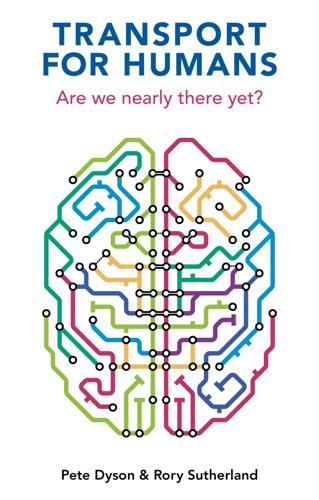
Transport for Humans: Are We Nearly There Yet?
by
Pete Dyson
and
Rory Sutherland
Published 15 Jan 2021
Report, 26 July (www.gov.uk/government/statistics/national-travel-survey-2017). 24 S. Cook, J. Shaw and P. Simpson. 2016. Jography: exploring meanings, experiences and spatialities of recreational road-running. Mobilities 11(5), 744–769. 25 J. Anable. 2020. The future of transport after Covid 19: everything has changed. Nothing has changed. Report, 25 June, UKRC Online (https://ukerc.ac.uk/news/the-future-of-transport-after-covid-19-everything-has-changed-nothing-has-changed/). 26 I. Philips, J. Anable and T. Chatterton. 2020. e-bike carbon savings – how much and where? Report, May, CREDS (www.creds.ac.uk/wp-content/pdfs/CREDS-e-bikes-briefing-May2020.pdf).
…
The term ‘liminality’ describes that period where you’re not doing one thing or another. Travel generates liminality: empty space that could ideally be filled with productivity, entertainment or socialization. Or you might choose not to fill it at all. The average UK weekday commute in 2019 was thirty-eight minutes each way.11 While this may not be time spent with our friends or family, or earning money, that doesn’t mean it is wasted time. For commutes into London, which are typically around forty-five minutes by bus or train, researchers have found that even the 59% of commuters whose main activity on their commute was ‘sleeping/snoozing’ considered their train journey time of some use or even very worthwhile.12 We have more available devices to amuse us when we travel now, so it is probably unsurprising that the proportion of people in the United Kingdom who reported that their rail commute was ‘wasting their time’ fell by 30% between 2004 and 2010.13 Innervations need only to reinforce this effect.
…
When it comes to how we get around, planners have for more than a century rigorously measured speeds and punctuality while missing the unique selling points that make us want to travel or that make the difference between pleasure and frustration – or downright fury. Think about your last journey. Did you choose the fastest method, or the most dependable? Did you weigh up every option, or stick to a familiar route? Were you delighted to arrive at your destination feeling fresh, or were you furious and weary? Did a hold-up leave you shuffling hastily along the train platform, hoping a table seat might still await you? Historically, engineers and accountants have been discouraged from thinking about the human side of their creations –and sometimes with good reason.
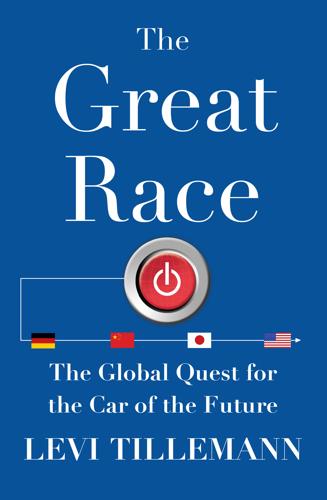
The Great Race: The Global Quest for the Car of the Future
by
Levi Tillemann
Published 20 Jan 2015
That’s why America, China, and Japan are in a white-hot race for the future of transportation. Indeed, the petroleum-free EV and what Forbes called the “Trillion-Dollar Driverless Car”—those autonomous mobility pods from the SAIC-GM Expo—are just around the proverbial corner. Of course, there will be winners and losers. Some countries and companies will inevitably move faster than others. And part of this will depend on the sophistication of a country’s car, battery, and technology companies—it certainly does not hurt to have a giant like Google or Nissan as a national champion. The leadership of individual innovators, activists, inventors, and dreamers is also key—and a focus of this story.
…
I also want to thank my agent, Gail. I greatly admire her passion for and commitment to bringing big ideas to broad audiences. Almost as soon as we met, she kindly but unsparingly informed me that I needed to punch up my writing if I hoped to engage the public in this important conversation surrounding the future of transportation and energy, and that has made all the difference. Throughout, there were two other people who put an enormous amount of thought, effort, and goodwill into this project. The first was Dan Yergin. When I took a job working for him a number of years ago as a research assistant, I hit the jackpot.
…
It is hard to assemble such a cadre of public servants, and even the smartest, most dedicated, and most incorruptible analysts can be surprised or make mistakes. On top of all that, many bureaucracies have a stifling tendency toward conservatism. But in an age of tightening carbon constraints, strategic industrial policy will be critical to America maintaining its innovative edge. Every nation has industrial policy—either explicit or implied. And the real choice is whether to ignore the critical role of the state in the modern economy or seek to apply state power strategically. Industrial policy can be sweeping or surgical. For instance, in 2008 the U.S. government made a specific policy decision to rescue America’s automotive industry because of its significance to the U.S. employment, technological dynamism, and economic growth.

The Upstarts: How Uber, Airbnb, and the Killer Companies of the New Silicon Valley Are Changing the World
by
Brad Stone
Published 30 Jan 2017
It had been the first to introduce unregulated ridesharing in San Francisco, Miami, and Kansas City, yet the endeavors of its founders, Logan Green and John Zimmer, often came off as sincere idealism, not predatory ambition. “Every Lyft ride is an opportunity for positive human interaction,” Zimmer gushed to CNN in one characteristic interview. “I also feel very fortunate to be changing the future of transportation, which will deliver a more people-centered city of tomorrow.”23 That July, Lyft started preparing to launch ridesharing in New York City, where Uber operated only with licensed professional drivers. Sidecar had attempted such a feat the year before, only to see its drivers issued summons and their cars impounded by the New York Taxi and Limousine Commission.
…
In October, Kalanick received additional confirmation from inside Google that the search giant was planning to compete with Uber. He subsequently asked board member David Drummond and board observer David Krane to stop attending Uber board meetings. Kalanick and his executives were plotting how they could jump-start Uber’s own driverless-car project and catch up to Google and electric-car maker Tesla. If the future of transportation was indeed going to be driverless, they reasoned, Uber had to own it. CHAPTER 11 ESCAPE VELOCITY Fights and Fables with Airbnb Victor Hugo had a saying: You cannot kill an idea whose time has come. And our time has come. —Brian Chesky1 A few months before Uber moved to its mood-lit offices on Market Street, Airbnb left its own comfortable nest, exchanging its Potrero Hill space for swank new headquarters a five-minute walk away in a hundred-year-old warehouse on 888 Brannan Street.
…
They said no because Ryan Graves wasn’t experienced enough or because the two founders weren’t involved enough or because they saw the concept as an extravagant indulgence for wealthy urbanites. Some said no because they had worked with the combative Travis Kalanick before at his previous companies and didn’t want to deal with the aggravation again; others because they knew the company was going to run headlong into a hostile tangle of city and state transportation laws. They said no and then later, after the company hit it big, insisted that the original e-mail had gone to their spam filters, or that they had simply overlooked it, or that they had been on vacation at the time.

The Long History of the Future: Why Tomorrow's Technology Still Isn't Here
by
Nicole Kobie
Published 3 Jul 2024
The lack of a telegraph meant schedules had to be carefully kept or engines weren’t ready to suck out air or did it too early, costing fuel. And, as before, weather and rats degraded the valve flaps, with so many dead rats piled up in the pipe that their corpses clogged it. The costs to fix the valve so terrified the company directors that the atmospheric design was abandoned in 1847 in favour of steam locomotives, and the line continues to this day, though running electrically. The failure of the Samuda brothers5 to make their piston-based pneumatic railways work didn’t end the belief that atmospheric railways were the future of transport. Earlier I mentioned Thomas Webster Rammell and Josiah Latimer Clark, who patented a way to send messages and packages via pneumatic tubes.
…
The script wasn’t made into an episode, sadly.11 Claydon believes the government just lacked imagination, not helped by the fact that visiting the Tracked Hovercraft site was less exciting than rival transport technologies, as the train couldn’t take passengers, meaning officials stood in a temporary shelter and watched the train go by – hardly an impressive demonstration of the future of transport. Had the project been wound down more carefully, Claydon says, the technology they developed might have been put to good use. Or, as the report put it: ‘They thought that they were closing down a project with dubious commercial prospects when in fact they were closing down the one major centre in this country of a new technology centre.’ One struggling idea doesn’t mean you shutter the whole lab, after all.12 Early development of the APT-E (E for ‘experimental’) proved controversial among train driver unions because there was only one seat in the cab.
…
No part of this publication may be reproduced or transmitted in any form or by any means, electronic or mechanical, including photocopying, recording, or any information storage or retrieval system, without prior permission in writing from the publishers Bloomsbury Publishing Plc does not have any control over, or responsibility for, any third-party websites referred to or in this book. All internet addresses given in this book were correct at the time of going to press. The author and publisher regret any inconvenience caused if addresses have changed or sites have ceased to exist, but can accept no responsibility for any such changes A catalogue record for this book is available from the British Library Library of Congress Cataloguing-in-Publication data has been applied for ISBN: HB: 978-1-3994-0310-8; eBook: 978-1-3994-0311-5 To find out more about our authors and books visit www.bloomsbury.com and sign up for our newsletters

Machines of Loving Grace: The Quest for Common Ground Between Humans and Robots
by
John Markoff
Published 24 Aug 2015
Kuffner, like all of the Google drivers, had been given strict instructions how to respond to this inevitable confrontation. He reached behind him and handed a prewritten document to the officer. The police officer’s eyes widened as he read it. Then he grew increasingly excited and kept the Google engineers chatting late into the night about the future of transportation. The incident did not lead to public disclosure, but once I discovered the cars in the company’s parking lots while reporting for the New York Times, the Google car engineers relented and offered me a ride. From a backseat vantage point it was immediately clear that in the space of just three years, Google had made a significant leap past the cars of the Grand Challenge.
…
A young Google engineer, Anthony Levandowski, routinely commuted from Berkeley to Mountain View, a distance of fifty miles, in one of the Priuses, and Thrun himself would let a Google car drive him from Mountain View to his vacation home in Lake Tahoe on weekends. Today, partially autonomous cars are already appearing on the market, and they offer two paths toward the future of transportation—one with smarter and safer human drivers and one in which humans will become passengers. Google had not disclosed how it planned to commercialize its research, but by the end of 2013 more than a half-dozen automakers had already publicly stated their intent to offer autonomous vehicles.
…
By payment of the required fees, you have been granted the nonexclusive, nontransferable right to access and read the text of this e-book on-screen. No part of this text may be reproduced, transmitted, downloaded, decompiled, reverse-engineered, or stored in or introduced into any information storage and retrieval system, in any form or by any means, whether electronic or mechanical, now known or hereafter invented, without the express written permission of HarperCollins e-books. FIRST EDITION ISBN 978-0-06-226668-2 EPub Edition AUGUST 2015 ISBN 9780062266705 1516171819OV/RRD10987654321 ABOUT THE PUBLISHER Australia HarperCollins Publishers Australia Pty.
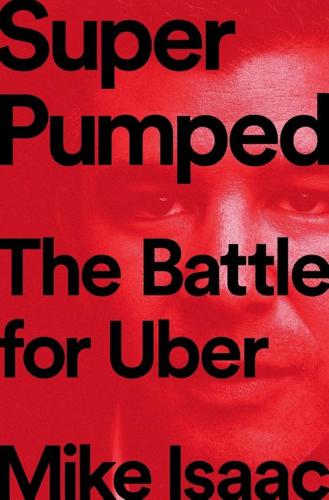
Super Pumped: The Battle for Uber
by
Mike Isaac
Published 2 Sep 2019
Kalanick’s story is whispered as a cautionary tale for founders and venture capitalists alike, emblematic of both the best and worst of Silicon Valley. The saga of Uber—which is, essentially, the story of Travis Kalanick—is a tale of hubris and excess set against a technological revolution, with billions of dollars and the future of transportation at stake. It’s a story that touches on the major themes of Silicon Valley in the last decade: how rapid developments in technology can crash into long-entrenched labor systems, throw urban development into upheaval, and overturn an entire industry in a matter of years. It is the story of a deeply sexist industry, fueled by gender imbalance and a misguided belief in a tech-supported meritocracy, blind to its own biases.
…
The Google co-founder harbored a deep interest in transportation. He kickstarted Google’s self-driving car research long before other tech and automobile companies thought it was possible. He poured millions of his personal wealth into researching flying cars. Larry Page didn’t care about Travis Kalanick; he cared about the future of transportation. Moreover, Kalanick never internalized Page’s philosophy on in-house competition. Larry Page gave his divisions a large degree of autonomy. Google Ventures, in particular, told outsiders that it was a separate entity from Google proper, meaning it didn’t necessarily report back to the mothership.
…
All of the events that occur in the narrative are based on information taken from primary and secondary sources, either from firsthand accounts of the parties involved, or from two or more parties with direct knowledge of the matter. Every scene has been corroborated by multiple people. All of the dialogue that appears in the book was taken from video recordings, audio files, or transcripts, or recounted by people involved in or with direct knowledge of the situations. Emails or text messages that appear in the book were viewed by or described to the author. My utmost concern is for the safety and security of my sources. I truly appreciate their help in telling this story.
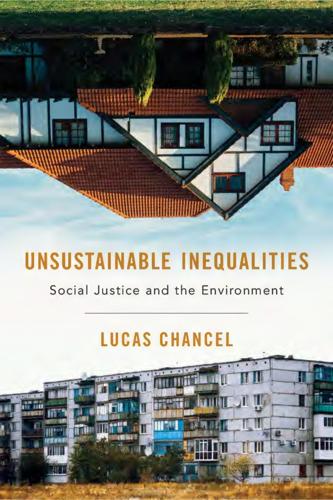
Unsustainable Inequalities: Social Justice and the Environment
by
Lucas Chancel
Published 15 Jan 2020
The success of communal water management in rich countries, together with these recent examples in developing and emerging countries, confirms that public water utilities are not only a viable option today but also a promising one in the years ahead, making it possible to unite quality of service and economic efficiency with truly democratic access to the most essential of all natural resources. THE FUTURE OF TRANSPORTATION Local authorities and national governments have every reason to invest in public transit (not only bus, subway, and train lines, but also carpooling), again as a way of protecting the environment while achieving the aims of social policy. This is especially true in emerging countries. Consider the situation of a worker living in a suburb of New Delhi who works nine hours a day and travels an hour and a half by bus to go to work in the morning and then another hour and a half to come back home in the evening.
…
The adequacy of these choices has long been questioned, however, beginning with the British economist Anthony Atkinson, who almost fifty years ago argued that the social welfare function implied by the Gini coefficient does not reflect commonly accepted criteria of justice.3 A simple and persuasive way of following the evolution of inequalities is to observe the share of incomes (or of wealth) allocated to different income groups—for example, the richest 10 percent (or 1 percent), the 40 percent in the middle, or the poorest 50 percent. For the purpose of studying changes in the share of the pie enjoyed by these different groups, the right sort of social welfare function is more illuminating than the Gini coefficient. It is generally agreed that a society in which the share of income captured by the richest (the top 10 percent, or the top 1 percent) grows ever larger, compressing the share of poorer groups (the bottom 50 percent, or the middle 40 percent), is increasingly inegalitarian.
…
By itself, the graph does not allow us to assert that income inequality is responsible for all these evils, or that reducing inequality will automatically eradicate them. Other factors may indeed be involved: on the one hand, a more or less great cultural tolerance for inequality in some countries; on the other, a more or less favorable environment for the development of certain illnesses. In that case a good score would not necessarily be due to a low level of inequality, but to deeper cultural, political, or geographic factors. Another possibility is that the state of a society’s health is the cause, rather than the consequence, of the observed level of economic inequality.16 But Wilkinson and Pickett seek to go beyond mere correlation by advancing a theory that explains the causal relation between inequalities and health problems.

Blood in the Machine: The Origins of the Rebellion Against Big Tech
by
Brian Merchant
Published 25 Sep 2023
Marshall, Florence Ashton. The Life and Letters of Mary Wollstonecraft Shelley. 2 vols., London, 1889. Marx, Karl, and Friedrich Engels. The Communist Manifesto (originally Manifesto of the Communist Party). London, 1848. Marx, Paris. Road to Nowhere: What Silicon Valley Gets Wrong about the Future of Transportation. London and New York: Verso, 2022. Mathias, Peter. The First Industrial Nation: An Economic History of Britain, 1700–1914. Second ed. London: Methuen, 1983. Mayor, Adrienne. Gods and Robots: Myths, Machines, and Ancient Dreams of Technology. Princeton, NJ: Princeton University Press, 2018.
…
“Amazon uses such tools” Nandita Bose, “Amazon’s Surveillance Can Boost Output and Possibly Limit Unions—Study,” Reuters, September 15, 2020. 14. These Amazon workers are paid so little Lauren Kaori Gurley, “A Homeless Amazon Warehouse Worker in New York City Tells Her Story,” Vice, June 18, 2021. 15. Tesla CEO Elon Musk, meanwhile Paris Marx, Road to Nowhere: What Silicon Valley Gets Wrong about the Future of Transportation (London and New York: Verso, 2022). 16. “Yes, excessive automation at Tesla” Elon Musk, Twitter post, April 13, 2018, 12:54 p.m., http://twitter.com/elonmusk: “Yes, excessive automation at Tesla was a mistake. To be precise, my mistake. Humans are underrated.” 17. “fauxtomation” Astra Taylor, “The Automation Charade,” Logic, no. 5 (August 1, 2018), https://logicmag.io/failure/the-automation-charade/. 18.
…
And in the 1800s, it really was an open question: it was not obvious which path history would take, or what the outcomes of adopting mass automation would be. The moral possibility of reversing the entire “tendency,” as George Mellor called it, was very real. “It was far from clear whether it was a portent of inevitable economic revolution, or but one course of development among several, which might be adopted or rejected,” Berg wrote. Would the machine “bring wealth only to those who owned it, or to society as a whole? Would it make work or create unemployment? Would it unite society or foment class conflict?” One’s answer to the machinery question was often split, as it is today, along class lines.

MacroWikinomics: Rebooting Business and the World
by
Don Tapscott
and
Anthony D. Williams
Published 28 Sep 2010
Toyota and Ford have already begun exploring ways to work with Zipcar, from using its members to test electric cars to designing vehicles specifically for the sharing market. “The future of transportation will be a blend of things like Zipcar, public transportation, and private car ownership,” says Bill Ford, Ford’s executive chairman. “Not only do I not fear that, but I think it’s a great opportunity for us to participate in the changing nature of car ownership.”25 FOCUSING THE MIND ON THE FUTURE OF TRANSPORT When it comes to fixing our industrial age transportation system, we may have only twenty to twenty-five years to complete such a complex technological effort.
…
For instance, Tom’s of Maine deodorant gets an 8.6 in part because it has no carcinogens, while Arrid XX antiperspirant rates a 3.8 because it contains known carcinogens. Another click leads to information behind the scores, like whether an ingredient causes reproductive problems or produces toxic waste, or whether the company has women and racial minorities in executive positions or faces labor lawsuits. To date, GoodGuide has scored some 75,000 products. “Our goal, in two or three years, is to be part of an ecosystem in which every consumer in the world gets the information they need to make better decisions while they’re standing in a store or shopping online,” says O’Rourke. The ideal scenario would be to have GoodGuide’s scores displayed right next to the price tag on retail store shelves.
…
He describes TV news as being the “highlight reel” of news on the Web. THE FILM 2.0 Just as MP3 and the Internet have turned the music industry upside down, emerging technologies in the film industry promise equally dramatic changes coming soon to a theater near you. Or to your computer screen. Or big-screen TV. Or mobile phone. Or minivan. Or sunglasses. The current model of the film—two hours in a dark theater with popcorn—won’t disappear, but it will become just a small piece of the bigger market that is best described as Film 2.0. Movies, video games, digital effects, and networking will all mesh to change where and how we watch films.

Buyology
by
Martin Lindstrom
Published 14 Jul 2008
From soft drinks to paper towels to chocolate bars to hair dryers, the list of fallen products is like a roll call of the dearly departed. In the U.K., there was a similar version of the Segway story. Was the Sinclair CS, a snow-white, battery-powered, one seater mini-motorcycle that looked like what Kato rode in beside the Green Hornet, the future of transportation across the British Isles? Well, priced at roughly four hundred pounds sterling, the Sinclair achieved speeds no higher than 15 mph (though you needed to pedal it if you were making your way uphill), effectively permitted fourteen-year-old kids to drive without a license, and after several months (and a whole lot of ridicule) was discontinued, having managed to sell only seventeen thousand units.1 Even Coca-Cola has had some embarrassing product flops.
…
The evidence supporting the existence of mirror neurons in the human brain is so compelling, in fact, that one eminent professor of psychology and neuroscience at the University of California has said, “What DNA is for biology, the Mirror Neuron is for psychology.”2 Have you ever wondered why, when you’re watching a baseball game and your favorite player strikes out in the top of the ninth inning, you cringe—or alternately, why, when your home team scores a goal or a touchdown, you pump your arm in the air? Or why, when you’re at the movies and the heroine starts weeping, tears well up in your own eyes? What about that rush of exhilaration you feel when Clint Eastwood or Vin Diesel dispatches a villain—or that alpha-male stride-in-your-step you still feel an hour after the movie ends? Or the feeling of grace and beauty that floods through you as you observe a ballet dancer or listen to a world-class pianist? Chalk it up to mirror neurons.
…
Close your eyes and walk into a church, a temple, or a mosque. You’re immediately enveloped in the ambience of the building, as you smell the air, the incense, and the fragrance of the wood. If you open your eyes, you’ll see the light reflect off the stained glass. Maybe a bell is sounding, or an organ is playing, or a priest or rabbi or minister is speaking. In a way, our senses allow us to “feel” the heart, soul, and sheer heft of a religion. Isn’t the same true for products? Products and brands evoke certain feelings and associations based on how they look, feel, or smell. Think of the unmistakable sound of a Nokia ring tone. Or the pristine, leathery scent of a brand new Mercedes-Benz.
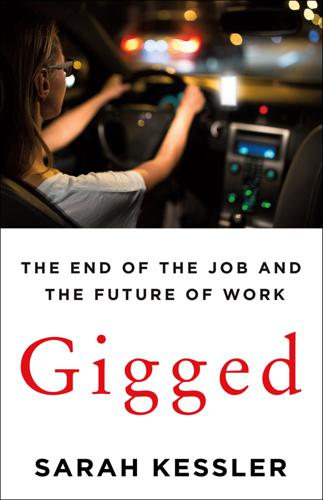
Gigged: The End of the Job and the Future of Work
by
Sarah Kessler
Published 11 Jun 2018
The startup decorated 100 rented pedicabs with banners that said “I U” next to a solid black shape of Texas (“I Uber Texas,” I suppose), and in interviews with bloggers, its executives hopefully suggested that riders post photos of themselves with the hashtag #Uberspotting. “If you’re an Uber virgin, prepare to experience the future of transportation,” its blog explained, helpfully noting that the process of calling an Uber pedicab would be easy to navigate “even when drunk.” Within a few short years, Uber would become one of the most valuable companies in the world. It would allow anyone—not just the professional drivers with which it had begun—to earn money as a taxi driver, and its fares (then $15 at minimum) would drop so low that in some cities they’d compete with public transportation.
…
Entry-level janitors in the state earned on average $21,000 per year or about $10 per hour, if they worked for 40 hours per week.11 Nationwide, the average was $15,000 or around $7.00 per hour.12 Managed by Q’s operators received a $0.25 per hour raise every six months. If they worked more than 30 hours per week, they received free health insurance, 40 hours of vacation, and a retirement savings plan.13 Managed by Q also prioritized creating jobs that provided reliable work. The startup, which made most of its revenue from weekly office cleanings, didn’t have unpredictable busy hours, like a store or Uber or Handy did, so workers could count on coming into work at the same times every week.
…
From a young age, my baby boomer parents had instilled in me that the mission of becoming an adult—the path to dignity, security, and independence—was to obtain a job. Most adults I knew in my rural Wisconsin town had a straightforward profession like teacher, lawyer, or mechanic. They worked at the grocery store or for the postal service. A large Nestlé factory in a town nearby made the air smell like chocolate if the wind blew just right, and another factory made Kikkoman soy sauce. Becoming employable—not following dreams, seeking some sort of personal fulfillment, or whatever it is they tell kids in coastal states—was in itself deserving of respect and dignity. So eager was I to become a real person, a person with a job, that I’d spent a good chunk of my summer vacation before high school at a greenhouse, picking aphids off of herbs and pulling the hard-to-reach weeds (being 13, I was skinny enough to squeeze between plant stands).
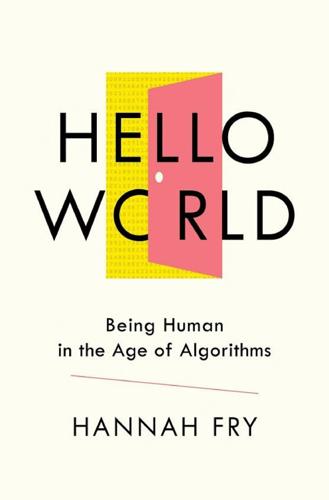
Hello World: Being Human in the Age of Algorithms
by
Hannah Fry
Published 17 Sep 2018
The rivalry had led to an explosion of new ideas, and by the next Grand Challenge in 2005, the technology was barely recognizable. Second time around, all but one of the entrants surpassed the 7 miles achieved in 2004. An astonishing five different cars managed to complete the full race distance of 132 miles without any human intervention.14 Now, little more than a decade later, it’s widely accepted that the future of transportation is driverless. In late 2017, Philip Hammond, the British Chancellor of the Exchequer, announced the government’s intention to have fully driverless cars – without a safety attendant on board – on British roads by 2021. Daimler has promised driverless cars by 2020,15 Ford by 2021,16 and other manufacturers have made their own, similar forecasts.
…
To understand why, imagine writing instructions to tell a computer whether or not a photo has a dog in it. You could start off with the obvious stuff: if it has four legs, if it has floppy ears, if it has fur and so on. But what about those photos where the dog is sitting down? Or the ones in which you can’t see all the legs? What about dogs with pointy ears? Or cocked ears? Or the ones not facing the camera? And how does ‘fur’ look different from a fluffy carpet? Or the wool of a sheep? Or grass? Sure, you could work all of these in as extra instructions, running through every single possible type of dog ear, or dog fur, or sitting position, but your algorithm will soon become so enormous it’ll be entirely unworkable, before you’ve even begun to distinguish dogs from other four-legged furry creatures.
…
What do they listen to, what do they watch, what do they return to time and time again? From there, you can use IMDb or Wikipedia or music blogs or magazine articles to pull out a series of keywords for each song or artist or movie. Do that for the entire catalogue, and then it’s a simple step to find and recommend other songs and films with similar tags. Then, in addition, you can find other users who liked similar films and songs, see what other songs and films they enjoyed and recommend those to your user. At no point is Spotify or Netflix trying to deliver the perfect song or film. They have little interest in perfection. Spotify Discover doesn’t promise to hunt out the one band on earth that is destined to align wholly and flawlessly with your taste and mood.
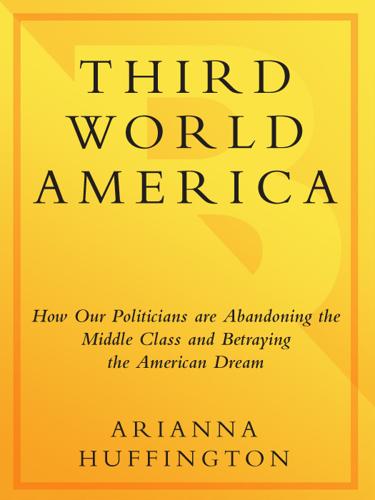
Third World America: How Our Politicians Are Abandoning the Middle Class and Betraying the American Dream
by
Arianna Huffington
Published 7 Sep 2010
Growth,” 11 Feb. 2008, www.pewresearch.org. 8 We invest just 2.4 percent of gross domestic product: “The Cracks Are Showing,” 28 Jun. 2008, www.economist.com. 9 China is busy building the most up-to-date: “Rushing on by Road, Rail and Air,” 14 Feb. 2008, www.economist.com. 10 For example, from 2006 through 2009, China spent: Keith Bradsher, “China Sees Growth Engine in a Web of Fast Trains,” 12 Feb. 2010, www.nytimes.com. 11 World Bank officials have described as: “Rushing on by Road, Rail and Air,” 14 Feb. 2008, www.economist.com. 12 And by 2020 China plans to construct: Andrew Peaple, “China’s Infrastructure Still on Rails,” 3 Mar. 2010, www.wsj.com. 13 In 2009 China built over 230,000 miles: “China’s Rural Road Length Hits 3.3 Million Kilometers; Most Villages, Towns Connected: Official,” People’s Daily Online, 22 Feb. 2010, www.english.peopledaily.com. 14 and announced plans to build ninety-seven airports: “Rushing on by Road, Rail and Air,” 14 Feb. 2008,www.economist.com. 15 In a column headlined “Time to Reboot America”: Thomas Friedman, “Time to Reboot America,” 23 Dec. 2008, www.nytimes.com. 16 Armando Carbonell, chairman of the Department of Planning: “Are ‘Mega-Regions’ the Future of Transportation?” 29 Jun. 2008, www.npr.org. 17 Felix Rohatyn, author of Bold Endeavors: Felix Rohatyn, Bold Endeavors: How Our Government Built America, and Why It Must Rebuild Now (New York: Simon & Schuster, 2009), 2, 3. 18 Building America’s Future (BAF): www.bafuture.org/about. 19 “deliver a message to Washington …”: “Pa.’s Rendell Urging Fix for Bridges, Roads,” 29 Jun. 2008, www.npr.org. 20 “If we don’t do something quickly …”: “The Next American Economy: Transforming Energy and Infrastructure Investment,” 3 Feb. 2010, www.brookings.edu. 21 According to Department of Transportation estimates: American Society of Civil Engineers, “National Fact Sheet,” 2005, www.asce.org. 22 In addition, it could also produce what Rendell: “Pa.’s Rendell Urging Fix for Bridges, Roads,” 29 Jun. 2008, www.npr.org. 23 As the debate over the stimulus began: Thomas Friedman, “Time to Reboot America,” 23 Dec. 2008, www.nytimes.com. 24 The result was a bill Jeffrey Sachs: Jeffrey Sachs, “A Fiscal Straitjacket,” 27 Jan. 2009, www.ft.com. 25 In the end, the $787 billion American Recovery and Reinvestment Act: Ed O’Keefe, “Eye Opener: April 14, 2009,” www.washingtonpost.com. 26 “I fear that we may soon look back and say …”: Van Jones, in conversation with the author, 2 Feb. 2009. 27 Faced with an even more devastating economic crisis: Alan Brinkley, “Roosevelt, Franklin Delano,” Feb. 2000, www.fdrheritage.org. 28 Among them is Steven Solomon: “Will the Next War Be Fought over Water?”
…
The National Priorities Project (NPP) provides a useful online tool that brings this budget trade-off to life by showing—specifically—all the things that could have been done with the money spent on Afghanistan and Iraq. For example, according to the NPP, since 2003, more than $747 billion of taxpayer money has been spent in Iraq.87 That could have provided: 115 million people with low-income health care for a year; or 98 million places in a Head Start program; or funding for more than 11 million elementary school teachers; or 11 million police officers; or 13 million firefighters; or 94.7 million college scholarships. While unaffordable college tuition prevents many qualified young people from achieving the American Dream, we are continuing to spend billions on outdated and redundant military defense programs, including pricey relics of the Cold War, such as the F-22 fighter, the Osprey transport helicopter, and America’s hugely expensive nuclear triad—bombers, submarines, and intercontinental ballistic missiles—designed to annihilate a Soviet empire that no longer exists.
…
According to the Washington Post, their bill “would create a two-year visa for immigrant entrepreneurs who are able to raise a minimum of $250,000, with $100,000 coming from a qualified U.S. angel or venture investor. After two years, if the immigrant entrepreneur is able to create five or more jobs (not including their children or spouse), attract an additional $1 million in investment, or produce $1 million in revenues, he or she will become a legal resident.” “At a time when many are wondering whether Democrats and Republicans can come together on anything, there is at least one area where we’re in strong agreement,” wrote Kerry and Lugar in an op-ed.

What's Mine Is Yours: How Collaborative Consumption Is Changing the Way We Live
by
Rachel Botsman
and
Roo Rogers
Published 2 Jan 2010
Zipcar charges $75 to become a member and then $8 per hour. In 2009, this fee schedule added up to a profitable year, with revenues of more than $130 million. In contrast, car sales declined by more than 40 percent. Bill Ford, automobile giant Ford’s executive chairman, admitted in an interview with CNN in 2009, “The future of transportation will be a blend of things like Zipcar, public transportation, and private car ownership. Not only do I not fear that, but I think it’s a great opportunity for us to participate in the changing nature of car ownership.”26 Car-sharing companies are not telling people not to drive; they are enabling them not to own.27 Subsequently, a growing segment of society is reinventing the story we have been told about how we get around.
…
When President Roo-sevelt shut down the country’s banks for a full week in 1933, many department stores accepted groceries for dresses; some doctors and lawyers were paid in batteries or oil; butchers took alcohol or tobacco for meat. But most Americans dropped the practice when a stronger economy returned. Let’s Do a Deal The concept of using what you no longer need or want, or perhaps what you have a surplus of, to get what you do need makes perfect logical sense. We have all acquired some skills within our lifetime, whether we can fix a car, decipher a tax code, speak a foreign language, or grow vegetables. Some people have more time than others, or have access to a space, a product, or expertise that someone else does not. Similarly, most businesses have underutilized assets such as office space or employee time; there are unfilled rooms in hotels or empty seats on planes; hairdressers, accountants, dentists, and other service professionals often have some open appointments in a week; and retailers have surplus inventory.
…
There are many scenarios where the market is ripe for this type of PSS, including when the product has “high idling capacity” (cars or household tools); when the product has a limited use because of fashion (handbags) or it fulfills a temporary need (baby equipment and maternity clothes); when the product diminishes in appeal and value after usage (a movie); and when high start-up or purchasing costs for products are the barrier to entry (solar panels). The second model is an “extended-life” PSS. Here an after-sales service such as maintenance, repair, or upgrading becomes an integral part of the product’s life cycle, thereby reducing the need for replacement or disposal.9 Products that are expensive or require a specialized knowledge to repair (electronic goods) or products that need to be updated or frequently maintained to preserve their appeal (furniture) are well suited to this type of product service system.
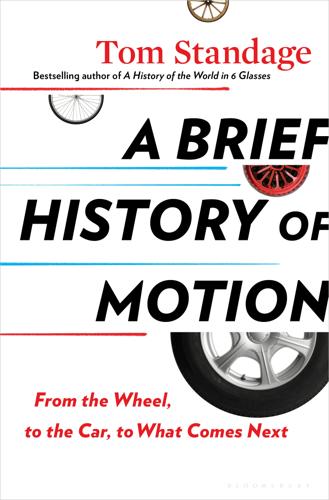
A Brief History of Motion: From the Wheel, to the Car, to What Comes Next
by
Tom Standage
Published 16 Aug 2021
B., here DuPont chemical company, and GM DuCo paints, here Durant, William C., here, here Egyptians, and wheeled vehicles, here, here, here Electric Vehicle Company, here electric vehicles battery technology and, here, here capacity of electrical grid and, here car-related issues not resolved by, here and climate change, effect on, here issues with raw materials for, here reduced environmental impact of, here of 21st century, here and zero-carbon electricity sources, here, here electric vehicles, in late 19th and early 20th centuries advantages and disadvantages of, here competition with gas and steam, here, here, here fleet vehicles, here marketing to women, here, here in Paris–Bordeaux race (1895), here, here in Paris–Rouen race (1894), here sales, here streetcars, here taxicabs, here, here Electrobat electric taxi, here ethanol as motor fuel, here advantages and disadvantages of, here, here, here alcohol taxes and, here, here early vehicles using, here, here and engine knocking, here failure to catch on, here, here Europe anti-car traffic laws in, here coaches as status symbols in, here, here early cities, design of, here early traffic laws and rules, here and invention of wheel, here transport for high-status persons in, here EV1 electric car, here fast food and assembly line food preparation, here car culture and, here declining popularity of, here largest chains, here pioneers of, here and standardization of chains, here, here Ford, Henry on assembly line production, here, here on ethanol fuels, here interest in electric cars, here, here on Model T, here, here and ride-hailing services, here Fordism, here Ford Model T advertisements for, here, here as affordable car for all, here, here assembly line production, here end of production, here and ethanol as motor fuel, here innovative design of, here as jitneys, here price decline with increased production, here, here sales of, here unchanging design of, as liability, here, here, here victory in New York to Seattle race (1909), here Ford Motor Company adoption of GM innovations, here early models, here, here expansion of brand (marque) offerings, here high pay of assembly line workers, here and installment payment plans, rejection of, here international expansion, here and self-driving cars, here and turn to sale of mobility services, here future of the car anti-car books, history of, here calls for end of ownership, here impending demise, here, here, here, here increasing urbanization and, here internet and, here, here modern alternatives to, here, here signs of declining interest, here future of transportation lessons from history of motion, here technological innovation and, here, here see also mobility as a service (MaaS) gasoline as fuel concerns about limited supplies, here, here lead additives to reduce knocking, here as little-used byproduct of kerosene manufacture before gas cars, here OPEC oil embargo of 1973–74 and, here gas stations, drive-in, as innovation, here Gaugamela, Battle of (311 B.C.E.), here General Motors, here car loans, introduction of, here, here carmakers acquired by, here closed body designs, adoption of, here and color choice as selling point, here, here electric cars of 1990s, here ethanol fuels and, here founding of, here growth into world’s largest company, here influence on business practices, here, here introduction of style changes to create “dynamic obsolescence,” here, here and lead as gas additive, here multiple brand (marque) strategy of, here and self-driving cars, here, here, here strategy vs.
…
No part of this publication may be reproduced or transmitted in any form or by any means, electronic or mechanical, including photocopying, recording, or any information storage or retrieval system, without prior permission in writing from the publishers. Bloomsbury Publishing Plc does not have any control over, or responsibility for, any third-party websites referred to or in this book. All internet addresses given in this book were correct at the time of going to press. The author and publisher regret any inconvenience caused if addresses have changed or sites have ceased to exist, but can accept no responsibility for any such changes.
…
Why use a vehicle that weighs one or two tons to carry one person on a short trip? For many car journeys micromobility can offer an attractive alternative. McKinsey, a consultancy, estimates that the global micromobility market will be worth $300 billion to $500 billion by 2030. Of course, the weather may be unsuitable, or the trip may be being made by several people, or with heavy or bulky items. And what if you need a car for a day trip, or a weekend? For such cases, the smartphone has made possible a new twist on car rental. Car-sharing services such as Zipcar let drivers rent a car by the minute, hour, or day. A smartphone app shows cars available nearby, often parked in specially designated bays.
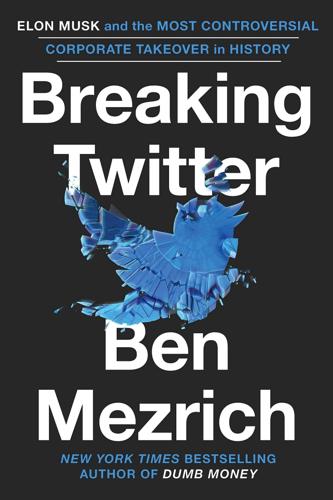
Breaking Twitter: Elon Musk and the Most Controversial Corporate Takeover in History
by
Ben Mezrich
Published 6 Nov 2023
She was up on the ninth floor, in one of the tiny, glass-walled conference rooms that circled the open workspace. This time the text had come from one of Elon’s “inner circle”—a woman named Jehn Balajadia. Jehn was the COO of Elon’s underground drilling business, the Boring Company, which had originally been pitched as the future of transportation, promising a network of underground Hyperloop tunnels spiriting electric cars up to a hundred and fifty miles per hour beneath crowded urban hot spots like Los Angeles, Chicago, and Baltimore. So far, the Boring Company’s greatest successes were a 1.7-mile long loop connecting the Las Vegas Convention Center with itself, populated by Tesla Model 3s moving at an underwhelming 30 mph; a mail-order personal-use flamethrower; and a fragrance called “Burnt Hair” that provided men and women with an olfactory experience “just like leaning over a candle at the dinner table, but without all the hard work.”
…
Elon’s answer began as a trickle, off the cuff, growing into a stream. “I think it would be helpful to differentiate between real and—to differentiate between real and, you know, like is this a real person—not just like a verified person—but like is this a real person, or is this a botnet or a sort of troll army or something like that… basically, how do you tell if the feedback is real or someone tries to manipulate the system? Or probably real or probably trying to manipulate the system?” Elon went on from there, and as he spoke, it was evident that he’d given a lot of thought to these concerns. His main critique seemed to be that it had become harder and harder to know what was real on the site and what wasn’t.
…
Elon stared at the image that had suddenly appeared on his laptop’s screen. Not a desk in a stark office, or a view of a glass-walled conference room; no whiteboards or steel-framed table or videoconferencing machinery. Not even a chair—but a lounger, something white and glimmering and reclined, maybe made of lacquered wood, or even wicker, could it actually be wicker? And behind the chair, a balcony that stretched a dozen yards to a low railing and beyond that, sand and water and goddamn palm trees, swaying in what could only be a tropical breeze. Elon could almost smell the coconuts, cracked by machetes or blended into sunscreen or milked into frilly drinks. Paradise in a tin fucking can.
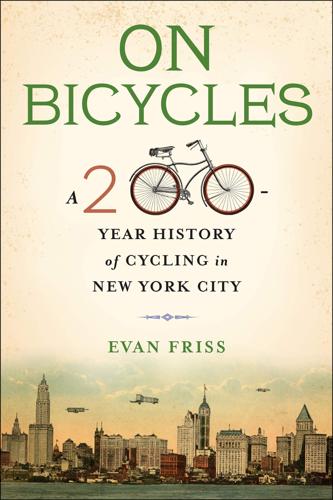
On Bicycles: A 200-Year History of Cycling in New York City
by
Evan Friss
Published 6 May 2019
They argued that the administration was unfairly attacking a vulnerable group—older, poorly paid immigrants who earned their living on a bike. By April 2018, the mayor budged, agreeing to permit the pedal-assist versions.3 Where e-bikes belong in New York is one of the still unsettled questions about the bicycle’s place in the future of transportation. How can the city improve bike safety and eliminate bicycle-pedestrian crashes and bicycle-motor vehicle crashes (still a far too common, and even deadly, problem)? How can the city encourage more women and people of color to ride? Will a dockless bikeshare program, in which riders can pick up and drop off their wheels wherever they wish, work?
…
Nor was cycling rendered obsolete by vast subway systems—those would come later too—or terrific improvements in the streetcar network or other forms of transportation. Bicycles had been used mainly for recreation, and there were no regulations or new restrictions that suddenly endangered the pastime. Nor was it because of some inherent flaw in American cities—too sprawling, too hilly, or too foul weathered. None of these factors stopped millions of Americans from gleefully pedaling about in the 1890s. Indeed, as a practical matter, the decision whether or not to bike from Hyde’s house on the Upper East Side to Spalding’s bike shop downtown should have been no different in 1902 than it was in 1896.
…
In today’s New York, it is hard to imagine that a new public restroom would look anything like the curved, two-story, blue terra-cotta-tiled bathhouse that Moses commissioned at Orchard Beach. Or that a new swimming pool could compete with the one large enough for 6,800 people that Moses, a former collegiate swimmer, built in Brooklyn’s McCarren Park. Or that another Lincoln Center will pop up in midtown or downtown or anywhere, for that matter. Which is why some New Yorkers and historians of recent vintage have praised the master builder, perhaps the last one we will ever see.1 Yet in equally plain sight is a landscape of poor choices and missed opportunities: homes destroyed, lives transplanted, pedestrians ignored, and a public transit system that might have been.

Street Smart: The Rise of Cities and the Fall of Cars
by
Samuel I. Schwartz
Published 17 Aug 2015
Every day I’d pick a different side street and always find something new. Depending on the wait for the elevator, the entire trip took between ten and eleven minutes, and I wasn’t anxious or rushed for a single one of them. As a boy, I had been a bit discomfited by the fact that my father walked to work, while most of the other fathers drove. Now I knew my father was the wisest of them all. He picked his home to minimize travel. Despite all this, I didn’t entirely trust that I’d discovered anything useful about the future of transportation. I knew I felt good about walking and biking. But I also knew that I was supposed to feel good. Much of what I read now professionally is pro-cycling and pro-walking, sometimes embarrassingly so.
…
A group of health economists in England studied eighteen years of data on more than eighteen thousand commuters who had been surveyed about their own mental health: whether they felt worthwhile or worthless, slept well or poorly, how well they coped with life problems. The more time they spent walking—or on public transportation—the higher their scores. As one of the researchers put it, You might think that things like disruption to services or crowds of commuters might have been a cause of considerable stress. But as buses or trains also give people time to relax, read, socialise, and there is usually an associated walk to the bus stop or railway station, it appears to cheer people up. . . . Our study shows that the longer people spend commuting in cars, the worse their psychological wellbeing.
…
Uber isn’t responsible, for example, if one of their drivers attacks you, or runs you down. That’s why they insist that the drivers carry liability insurance of $1 million. The company’s terms and conditions include the following (the capitalization is theirs, not mine): YOU ACKNOWLEDGE THAT UBER DOES NOT PROVIDE TRANSPORTATION OR LOGISTICS SERVICES OR FUNCTION AS A TRANSPORTATION CARRIER. UBER’S SERVICES MAY BE USED BY YOU TO REQUEST AND SCHEDULE TRANSPORTATION OR LOGISTICS SERVICES WITH THIRD PARTY PROVIDERS, BUT YOU AGREE THAT UBER HAS NO RESPONSIBILITY OR LIABILITY TO YOU RELATED TO ANY TRANSPORTATION OR LOGISTICS PROVIDED TO YOU BY THIRD PARTY PROVIDERS THROUGH THE USE OF THE SERVICES OTHER THAN AS EXPRESSLY SET FORTH IN THESE TERMS.
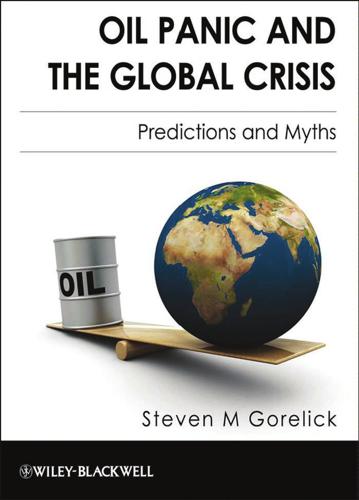
Oil Panic and the Global Crisis: Predictions and Myths
by
Steven M. Gorelick
Published 9 Dec 2009
The relative political instability and lawlessness of these countries is perhaps an indication that they could not tolerate elimination of the significant income they obtain from oil exports. The point is that one potential unintended consequence of a reduction in oil use is social disintegration of some oil-exporting nations. How do oil price and price stability affect the future of transportation fuels? Consumers like inexpensive gasoline. In the US, the drop in gasoline price in 2009 to its long-term, historical average of $2.25 per gallon was a relief and economic benefit. However, at that price, the development of new, expensive offshore oil sources and alternative liquid fuels is not profitable.
…
No part of this publication may be reproduced, stored in a retrieval system, or transmitted, in any form or by any means, electronic, mechanical, photocopying, recording or otherwise, except as permitted by the UK Copyright, Designs and Patents Act 1988, without the prior permission of the publisher. Wiley also publishes its books in a variety of electronic formats. Some content that appears in print may not be available in electronic books. Designations used by companies to distinguish their products are often claimed as trademarks. All brand names and product names used in this book are trade names, service marks, trademarks or registered trademarks of their respective owners.
…
There are some definitions related to oil availability that are central to the discussion of oil. A resource is “a concentration of naturally occurring solid, liquid, or gaseous material in or on the Earth’s crust in such form and amount that economic extraction of a commodity from the concentration is currently or potentially feasible.”3 A more specific definition for petroleum resources is, “Concentrations in the earth’s crust of naturally occurring liquid or gaseous hydrocarbons that can conceivably be discovered and recovered.”4 The oil endowment includes the estimated oil resource plus all of the oil that has been pumped from the ground.

Insane Mode: How Elon Musk's Tesla Sparked an Electric Revolution to End the Age of Oil
by
Hamish McKenzie
Published 30 Sep 2017
At the same time, a range of smaller companies in China plan to build enough factories to account for more than 120 gigawatt-hours of capacity by 2021. With the Gigafactory, Tesla has again positioned itself as a pioneer in an industry worth many billions of dollars. Anyone interested in the future of transportation and the energy economy should watch that building down the road from USA Tavern with utmost attention. * * * It was close to 100 degrees Fahrenheit at midday on Tuesday, July 26, 2016. The wind was whipping up loose dirt at the Gigafactory site, so the workers and construction equipment were intermittently enveloped in mini tornadoes.
…
Except for those among us who are especially twisted, we’ll enjoy never again having to parallel park, or having to find parking at all, because our cars, or the ones we’ve paid to ride in, will drive themselves to parking spots or simply move on to pick up someone else. We’ll be able to convert our garages into bedrooms or home offices, or places to store disused KitchenAid mixers, bread makers, and Abdominizers. We’ll pay lower auto insurance premiums. The autonomous age also promises a do-over for urban planning, and it might not be all to the good. People may forsake public transport and instead pour onto the roads, clogging them up even worse than today. Or, knowing that it’s cheaper for their cars to simply drive themselves around the city than to pay for parking, car owners could let their empty vehicles roam while not in use, creating a nightmarish scenario of what Robin Chase calls “zombie cars” crowding the streets uselessly.
…
“Well, you can’t ignore a hundred and twenty-five years of history. The auto industry didn’t not learn anything.” When you put together a car, most of it is mechanical, and most of it is done by people who have spent a career working out how to do a suspension system, or a door lock, or a steering wheel, Palmer said. “And you can’t ignore that. So you’ve got to buy it. And you either buy it through a consultancy, or you buy it through recruitment, or you buy it through collaboration.” This spelled trouble for the newcomers. “The majority of those start-ups will fail because they’ll be too slow to recognize that they can’t just trash the auto industry, that there’s something relevant that they need.”
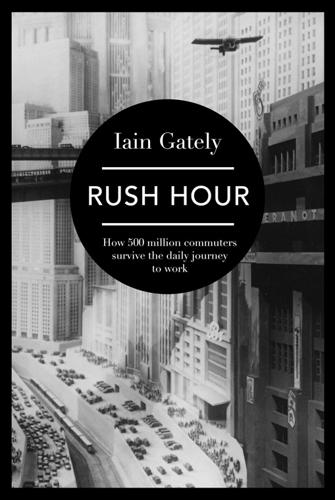
Rush Hour: How 500 Million Commuters Survive the Daily Journey to Work
by
Iain Gately
Published 6 Nov 2014
Rovers and their imitators, in contrast, were easier and more comfortable to ride, and perfect – if the condition of the roads allowed – for the average four- to five-mile journey to work of the 1890s and 1900s. They were especially popular with factory workers, including those at Starley’s works in Coventry. Starley himself, however, like Colonel Albert Pope in America, believed that the future of transportation lay in motorized vehicles, and before his death in 1901 he had experimented with electric cars and motorbikes. In 1904, his successor gave up on bicycles and started building automobiles under the Rover brand. Although car commuters in Britain were fewer overall, they were growing more quickly in number, rising ninefold between 1909 and 1939, against a doubling in the number of cyclists.
…
Kompier, a Dutch psychologist, driving a bus is ‘a high-risk occupation’, cruel to both body and psyche, in comparison to office work, blue-collar work, taxi driving or working at a brewery or as a civil servant – or indeed almost every other occupation. Sitting down all day and driving a large vehicle slowly is more dangerous than it seems. The ergonomics of many drivers’ cabs are poor – the steering wheels are too big, the seats are one-size-fits-all and the pedals are either not close enough or almost out of reach, with the result that most drivers have to twist, stretch or hunch up while they’re being shaken by the motion of the bus, blasted with hot or cold air whenever they open the doors, and abused by their passengers.
…
There was, moreover, a whole vocabulary of ‘abrupt or tart replies’, and ‘a species of grunt expressive of dissent or dissatisfaction’ that the experienced commuter might employ to silence the loquacious and save them from themselves. The best defence against unwanted conversation was a book or newspaper. According to a proverb of the time, ‘he who rails may read’. The railways were credited with causing a surge in literacy in the UK. There were boys on most platforms selling papers and travel guides such as Bradshaw’s Monthly Railway Guide, and many stations had kiosks, run by crippled guards or their widows, that offered bodice-rippers and adventure yarns.
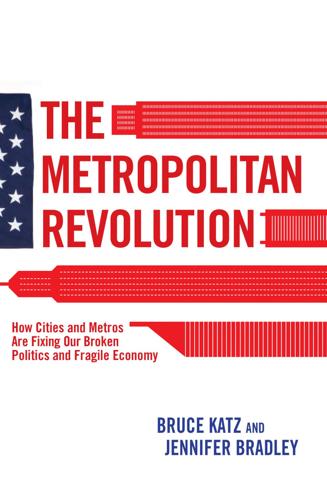
The Metropolitan Revolution: How Cities and Metros Are Fixing Our Broken Politics and Fragile Economy
by
Bruce Katz
and
Jennifer Bradley
Published 10 Jun 2013
In 1997 voters in the suburban counties around the city of Denver gave a resounding no to the proposed tax increases (and only a tiny majority of Denver voters supported it), and Guide the Ride failed, 58 to 42 percent.51 A prominent local pollster looked at the voting and survey data and concluded that “the future of transportation planning in the Denver metro area will depend on a new alliance of business, local government and transportation agencies that are guided by a new philosophy of transit pragmatism.”52 “Guide the Ride was about as bad an initiative as you could put on the ballot,” said Randy Pye, several years later.
…
The United States is also the world’s largest exporter of services, with a trade surplus in commercial services of $160 billion in 2010.31 When a U.S. firm designs a building in Shanghai or Mumbai or São Paulo, that design is a service export. When a foreign student pays tuition at the University of Southern California, Carnegie Mellon University in Pittsburgh, or the New School in New York City, that tuition payment is also 07-2151-2 ch7.indd 152 5/20/13 6:55 PM A GLOBAL NETWORK OF TRADING CITIES 153 a service export. Service exports can include a tourist from abroad paying to see the sights in New York or New Orleans, Las Vegas or Los Angeles, or a physically ill patient from a foreign country coming to see a doctor at the Cleveland Clinic, the Kleinert Kurtz Hand Care Center in Louisville, or the Methodist Debakey Heart Center in Houston.
…
The health of a metro’s networks is as important a gauge of metropolitan potential as traditional economic or social metrics. It is measured more by qualitative than quantitative means—“You know it when you see it,” as Justice Potter Stewart famously said, in a different context, years ago.2 We have devised a simple test to discern whether a metropolis is open or closed, collaborative or divisive: Spend fifteen minutes in conversation with elected officials or appointed leaders, such as the head of the business chamber or local philanthropy. If they talk about the networks they are organizing or participating in and talk up their fellow partners, you have entered an open, functioning metropolis.

Arriving Today: From Factory to Front Door -- Why Everything Has Changed About How and What We Buy
by
Christopher Mims
Published 13 Sep 2021
But in the port itself, all of the human-driven yard trucks and many of the container-sorting cranes, oversize forklifts, and the like are all still burning diesel fuel. When a port makes the switch to automated systems, it often means a switch to all-electric systems as well, or at least hybrid electric. There is an important but not often remarked-upon connection between autonomous and electric systems, worth noting because, while the two will have enormous impacts on the future of transportation and automation, when combined, their impact has the potential to be even greater. As any autonomous systems engineer will readily explain, electric drives—that is, electric motors—and their attendant control systems are easier to automate than mechanical ones, which are less responsive and precise.
…
It might handle a few extraordinarily well-mapped turns and surface roads as it exits the highway and pulls into the parking lot of a warehouse, the sort that Walmart uses to consolidate and redistribute goods headed for its stores, or that FedEx, UPS, and the U.S. Postal Service (USPS) use to do the same for packages. The truck also isn’t going to roll in icy conditions, or snow, or maybe even in heavy rain. By constraining the problem, that is by cutting off all the messy bits that require the adaptability of a human, TuSimple hopes to create what are more or less land trains—a faster and more versatile alternative to railroads, built from trucks. A fully autonomous truck doesn’t take breaks. It doesn’t eat or use the toilet or have to obey Department of Transportation rules about how long it can drive before it needs to get some sleep.
…
By payment of the required fees, you have been granted the nonexclusive, nontransferable right to access and read the text of this e-book on-screen. No part of this text may be reproduced, transmitted, downloaded, decompiled, reverse-engineered, or stored in or introduced into any information storage and retrieval system, in any form or by any means, whether electronic or mechanical, now known or hereafter invented, without the express written permission of HarperCollins e-books. Cover design by Amanda Weiss Cover photographs © Getty Images FIRST EDITION Library of Congress Cataloging-in-Publication Data Names: Mims, Christopher, author.
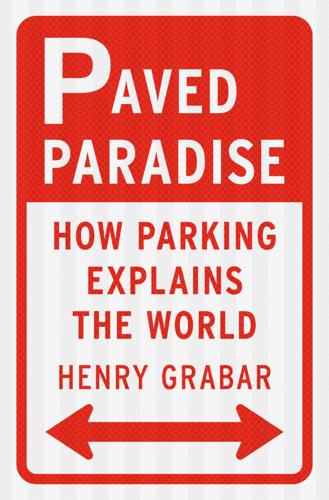
Paved Paradise: How Parking Explains the World
by
Henry Grabar
Published 8 May 2023
See United States Utah, Park City, 25 V Valley of High Parking Requirements, 178–79, 179, 182 Vallianatos, Mark, 176–78, 182–83, 184, 186–88 Van Horn, John, 35, 93–94, 207, 278 Velkey, Andrew, 27 Ventura, California, 166–67 Venturi, Robert, 181 Vienna, Austria, 65 Vinluan, Ben, 242 violations, parking, 42–43, 44–45, 46–47 violence, x, 22–23, 39, 149, 248–50 Virginia, 25, 95 Volpe, Paul, 123, 124–26, 133, 135–36 W Waguespack, Scott, 121–22, 123–26, 133, 137, 141–42, 200 Waksman, David, 36–37 Walden Pond, 77–78 Wallander, Arthur, 35–36, 54–55 Walmart, parking requirements of, 215 Walt Disney Concert Hall, LA, 191–92 Ward, Benjamin, 38 Washington (state), xiii, 75, 86, 208 Washington, DC, 28, 53, 86, 215 Washington, George, 237 The Washington Post (newspaper), 63 Weinberger, Rachel, 82–83, 85 Weiner, Anthony, 256 Westerbeck, Cary, 208 Westport, Connecticut, 9 Westwood Village, California, 164 Whole Foods, 202, 272 Whyte, William H., 42, 248, 254 Wicker Park, Chicago, 200–201 Wilberding, Jane, 202–3, 269 William Blair & Co., 126, 133, 136 Willson, Richard, 85 Wilson, Clyde, 104 Woodward, Bob, 92 Woolfolk, Eddie, 20 Working (Terkel), 139 World’s Fair (1939), 58 Wright, Frank Lloyd, 236, 238, 240 Wrigley Field, Chicago, 118–19 Y Yang, Jenny, 187 Yaruss, Howard, 262, 263–66 Yellin, Ira, 192 Yellowstone National Park, 8 Z Zabar, Stanley, 100 Zamora, Miguel, 4, 5, 18 Zito, David, 17 Zwillman, Abner “Longie,” 99 A B C D E F G H I J K L M N O P Q R S T U V W X Y Z About the Author Henry Grabar is a staff writer at Slate who writes about housing, transportation, and urban policy. He has contributed to The Atlantic, The Guardian, and The Wall Street Journal, and was the editor of the book The Future of Transportation. He received the Richard Rogers Fellowship from Harvard University’s Graduate School of Design and was a finalist for the Livingston Award for excellence in national reporting by journalists under thirty-five. What’s next on your reading list? Discover your next great read!
…
Who knows how many cars come and go and how long they stay? So although you actually collect, say, $225 on a given day, who says you can’t put $750 or $1000 in the bank. At that moment, the additional $525 or $775, which may be the result of a bank robbery or numbers running, becomes perfectly legitimate. You pay your taxes, and buy your house, or limo, or whatever.” That’s the beauty of an all-cash business: you can pocket the cash and underreport to the IRS, or money launder and overreport to the IRS. Garages get robbed, too. “People never understood: You could steal more money from a parking garage than from a bank,” said Dennis Cunning, an industry vet turned auditor.
…
Most of all, what was being sold at the NPA was competing technology to finally kill the parking industry’s white whale: correctly counting the number of cars that enter a garage. * * * Most garages are not owned by people who know anything about parking. They are built, begrudgingly, by developers whose real expertise is in office buildings or condominiums, or by local governments under pressure from nearby businesses. The design is a throwaway from an architect who resents the assignment. The equipment is the cheapest thing around. The operator—SP+ or QuikPark or InterPark or LAZ, or more likely some local outfit—is brought in on a fixed-rate contract that puts the onus to maximize revenue on an owner whose interests lie upstairs. And then there was Chicago’s Poetry Garage, a quarter block of downtown between the creaking rails of the Loop and the Chicago River.
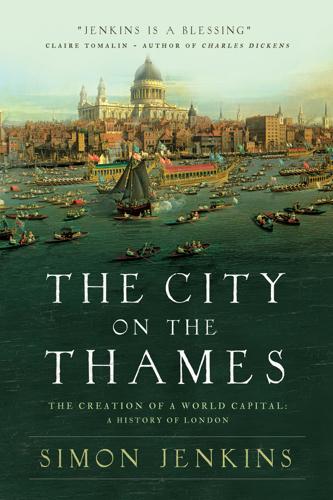
The City on the Thames
by
Simon Jenkins
Published 31 Aug 2020
At the same time an American consortium began a much grander venture, a long tunnel from Shepherd’s Bush under Notting Hill and Bayswater and on beneath Oxford Street to St Paul’s. The platforms on what was called the Central Line were reached by lifts, and the train seats were upholstered and comfortable. This luxury was little short of sensational. The line became the aristocrat of the Tube, its fixed fare dubbing it the Twopenny Tube. If the future of transport in the metropolis lay underground, there was a last sad epitaph on the age of the surface railway. An act of capitalist bravado saw the arrival in the city in 1899 of the Great Central. It was the brainchild, bordering on obsession, of the tycoon Sir Edward Watkin, who dreamed of a luxury service linking the north of England into London’s Metropolitan Line, of which he was also chairman.
…
G. 217; Tono-Bungay 211 Welwyn Garden City 251 Wembley 231–2 Wentworth, Thomas (later 1st Earl of Strafford) 63 Wesker, Sir Arnold 261 Wesley, John 109 West Cross Route (dual-carriageway road) 280 West Ham 275 West Ham United (football club) 328 West Hampstead 181 West India Dock 131, 293 West Indian immigrants 261, 271, 275 West Square (Lambeth) 120 Westbourne Gardens estate 271 Westbourne Grove 181 Westbourne stream 139, 140, 168 Western Avenue 228 Westminster, City of: 17th century 59, 60, 61–2, 63, 70–73, 83–6, 91; 18th century (early) 94–5; 1960s and 1970s 262–3, 264, 268, 270, 281–5; 1980s and 1990s 283; 21st century 306–7, 323, 325, 338–9; Edwardian 196–7, 198–200; Georgian 99–104, 110, 115, 119–20, 123–6; interwar 219–22, 225, 227–8, 230; Norman and medieval 27, 31; origins 21–3; post-war 245, 249–50, 252, 255–9; Regency and under George IV 132–6, 139–47, 148; Second World War 236, 245; topography 8; Tudor 41–2, 45; Victorian (early) 153–4, 163–7, 168, 169; Victorian (late) 176, 177, 179, 184–5; under William IV 151, 152–3, 154 Westminster, Hugh Grosvenor, 2nd Duke of 220 Westminster Abbey: 17th century 63, 64, 65; 18th century 99; 19th century 177; foundation by Edward the Confessor 22, 23, 25; Norman and medieval 25, 30–31, 34, 36; site 21–2; Tudor 40, 41, 153 Westminster Bridge 82, 113, 114, 120, 127, 147 Westminster Cathedral 198 Westminster Hall 27, 31, 63, 152; see also Palace of Westminster Westminster Paving Act (1762) 119–20 Westminster station 294 Westphalia, Peace of (1648) 66 Westway (dual-carriageway road) 279–80 Whistler, James McNeill 186, 203 White, Jerry 216, 231 White Tower see Tower of London Whitechapel 185, 207, 208, 256, 275; Bloom’s restaurant 207 Whitehall 70, 120, 146, 283; Foreign Office 176, 283; Treasury building 198, 283; War Office 199 Whitehall Palace 41, 45, 51, 60, 85–6, 91, 99; Banqueting House 59, 66, 85, 86; see also York Place Whiteley, William 180–81 Whiteley’s (department store) 180–81 White’s (club) 137 Whittington, Richard 38–9, 50 Whittington Hospital 39 Whittlesey Street 185 Wickhams (department store) 181 Wilberforce, William 136 Wilde, Oscar 182, 200 Wilkes, John 116–17, 119 Wilkins, William 146 William I, King 22, 24, 26–7 William III, King (earlier Prince of Orange) 88–91, 96, 98 William IV, King 150 William Rufus (later King William II) 27 Williams, Raymond 105 Williams-Ellis, Sir Clough 210 Willmott, Peter 265–6 Wilson, Harold, Baron Wilson of Rievaulx 276 Wimbledon 210 Wimpole Hall 102 Winchester 21, 25, 28 Windmill Theatre 236 ‘Windrush’ immigrants 275 Windsor Castle 64, 146, 166 Wine, Bishop of London 18 ‘winter of discontent’ (1978–79) 276 Wintour, Charles 282 Wittenberg 44 Woburn Square 284 Wollaton Hall 52 Wolmar, Christian 204 Wolsey, Thomas 43–4, 45 women: employment 111, 206, 215, 218; social life 53–4, 128, 188; in theatre 67, 70; voting rights and political life 177, 191, 218 Wood Green 317 Woodford 207, 210 wool trade 32, 40 Woolwich 175, 225, 230, 281, 317; Arsenal 215; Thames Barrier 281; town hall 201 Wordsworth, William 127, 129 workhouses 46, 119, 152, 161, 176, 215, 224 World Bank 239 Worms 38 Wren, Sir Christopher 70, 85, 95, 105, 258, 338; plan for post-fire reconstruction 77, 78–9, 80–81, 83, 120, 133, 134, 173, 243, 244; City churches 80–81, 136, 198, 338; St Paul’s Cathedral 80, 81–2; Kensington Palace 91, 97 Wright, Patrick 266, 301 Württemberg, Frederick, Duke of 53–4 Wycliffe, John 38, 44, 109 Wykes, Thomas 31 Wyndham Place 137 Wyngaerde, Anthonis van den 50, 51, 63 Yerkes, Charles Tyson 202–4 Yes Minister (television series) 279 York 10, 17, 24, 37; Jorvik Viking Centre 14 York Place 41, 42, 45; see also Whitehall Palace Young, Michael, Baron Young of Dartington 265–6 Young, Simon, AD 500 16 youth culture 248, 261, 262, 318 ‘yuppies’ (young upwardly-mobile professionals) 299–300 Zamoyski, Adam 172 Zeppelins 216–17 zoos 30, 103; London Zoo 135, 147 THE CITY ON THE THAMES Pegasus Books Ltd. 148 W 37th Street, 13th Floor New York, NY 10018 Copyright © 2020 Simon Jenkins First Pegasus Books cloth edition September 2020 All rights reserved. No part of this book may be reproduced in whole or in part without written permission from the publisher, except by reviewers who may quote brief excerpts in connection with a review in a newspaper, magazine, or electronic publication; nor may any part of this book be reproduced, stored in a retrieval system, or transmitted in any form or by any means electronic, mechanical, photocopying, recording, or other, without written permission from the publisher. ISBN: 978-1-64313-552-6 ISBN: 978-1-64313-553-3 (ebook) Jacket design: Faceout Studio, Amanda Hudson Imagery: Paintings by Canaletto / Bridgeman Images Distributed by Simon & Schuster www.pegasusbooks.com
…
The City continued to enjoy a close-knit, partly democratic participation of its own, rooted in its crafts and guilds, in their misteries and aldermen. Change of any sort was anathema. Westminster was the converse. It had no local politics at all. Ruled by a dozen or more parish vestries, its population was a changing cast of migratory tenants, eager only for space to lay their heads and an opportunity either to make money or have a good time. The result was a city little interested in the state of the country of which it was capital, or even the region of which it was hub. Throughout history it had supported or rejected monarchs and political movements as circumstance required. Each was judged against the notional interest of the metropolis itself.
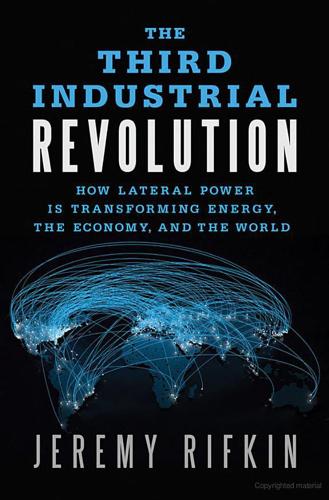
The Third Industrial Revolution: How Lateral Power Is Transforming Energy, the Economy, and the World
by
Jeremy Rifkin
Published 27 Sep 2011
A must-read.” —Guido Bartels, chairman of the Global Smart Grid Federation “An exciting vision for a post-carbon society. Rifkin embeds green transport inside a new high-tech Third Industrial Revolution infrastructure, re-framing the very concept of human mobility. This could well be the future of transportation.” —Alan Lloyd, president of the International Council on Clean Transportation “The old ways of creating wealth just don’t work anymore, and politicians the world over are struggling to cope with the convergence of financial meltdown, huge debt, rising commodity and energy prices, accelerating climate change, and food and water shortages.
…
Breedlove notes that “The largest unmanaged ecosystem in America is suburbia,” which is a counterintuitive notion that strikes a chord.39 In Europe, metropolitan areas are far advanced of the United States and other parts of the world in re-wilding urban regions and establishing an urban biosphere consciousness. Many European cities have devoted half their space or more to open green areas, forests, and agriculture. They have also made sure to maintain or reclaim creeks, small clumps of forests, and meadows inside or close to the urban cores. For example, one quarter of Zurich, Switzerland, remains forested. Fortunately, in many European cities, the forestlands of former royal estates were kept off limits from developers and were either preserved for wildlife or transformed into public parks where local populations can commingle with wildlife. Timothy Beatley, author of Green Urbanism: Learning from European Cities, observes that many European communities eschew “the historic opposition of things urban and natural” and prefer to live in urban areas that “are fundamentally embedded in natural environments.”40 In 1890, the US Census Bureau announced the official closing off of the American frontier.
…
Whenever President Obama mentions his green economic recovery, he rattles off a laundry list of programs and initiatives his administration is either doing or proposing. And there are real dollars behind these initiatives. The federal government has already committed $11.6 billion for energy efficiency, $6.5 billion for renewable energy generation (primarily wind and solar), $4.4 billion for grid modernization to develop a smart grid, and $2 billion to advance battery technology for electric plug-in and fuel cell vehicles.1 The president also takes every opportunity to visit a solar or wind turbine park, a factory manufacturing solar panels, or a car company testing electric vehicles to demonstrate his sincere commitment to a green economic future.
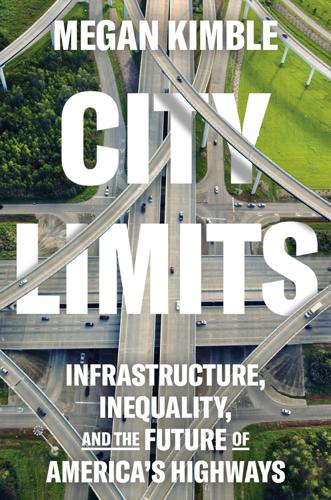
City Limits: Infrastructure, Inequality, and the Future of America's Highways
by
Megan Kimble
Published 2 Apr 2024
Although the arrangement allowed the state to move more quickly on projects, reducing cost and unnecessary delays, it also meant that TxDOT operated with essentially no federal oversight. On February 4, TxDOT issued its record of decision for the North Houston Highway Improvement Project. “The future of transportation is changing and the infrastructure in the nation’s fourth largest city needs to change with it,” TxDOT announced. This project would help Houston prepare for the future “by improving resiliency to weather events and providing safer, more efficient travel.” The highway expansion was moving forward, and Houstonians needed to either get on board or get out of the way. Meanwhile, a thirty-three-year-old named Christian Menefee was settling in as the new Harris County Attorney, the first Black person to hold the office, as well as the youngest.
…
Just as demand for goods fluctuated, demand for travel was not static. When presented with a wide-open expressway, commuters would flock to that expressway, eschewing other forms of travel. Offered this new ease of access, they might decide to move farther from their job or school, extending their commute, or take trips that might previously have been too costly, in time or money. Demand increases, outstripping the newly created supply. “We thus arrive at the paradoxical conclusion that the opening of an expressway could conceivably cause traffic congestion to become worse instead of better, and automobile commuting times to rise instead of fall!”
…
Nearly $8 billion was on the line, a once-in-a-generation infrastructure project that would affect every Houston resident, directly or indirectly. Susan said, “Well, do you want to chair the election committee?” Molly started organizing block walks in the neighborhoods adjacent to the highways that would be expanded. Some people had attended a community meeting five years earlier, but they hadn’t heard anything since then, so they assumed the project had been shelved or passed over. Most people weren’t aware of the expansion. People living on land that TxDOT wanted to take for the highway didn’t know they were going to lose their homes. Either they were renters and hadn’t been told, or they’d missed the letter, shuffled in among advertisements and solicitations.
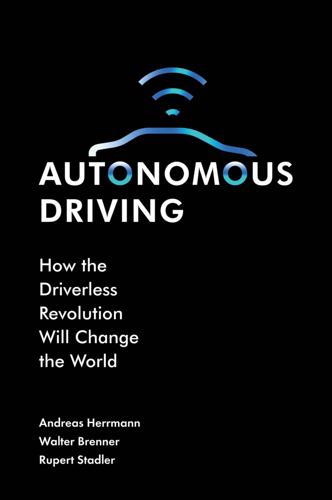
Autonomous Driving: How the Driverless Revolution Will Change the World
by
Andreas Herrmann
,
Walter Brenner
and
Rupert Stadler
Published 25 Mar 2018
Digitisation makes car driving more comfortable, it ensures more traffic safety and less congestion. This is why the German automotive industry is so heavily involved in this field of innovation. transport. Robo-cars are the future of transporting passengers in the centres of smart cities. It will be possible to request such a car from the train using an app, and then to be picked up and driven home. The car will know the train timetable, the traveller’s final destination, and will find the best, fastest or shortest route to that destination, taking traffic conditions into consideration. In the future, railroad companies may operate fleets of autonomous vehicles to supplement their existing services.
…
One example here is the planned Audi Fit Driver service, by which a Business Models 319 wearable device (fitness armband or smart watch) records vital parameters such as pulse rate. In addition, the car delivers data on the driving style, the weather and the traffic situation. The combination of these data can be used to recognise the driver’s current condition in terms of stress or fatigue for example. The vehicle system then adjusts to the driver by acting in a relaxing, vitalising or protective way. The driver is to be offered an experience adjusted to his or her current condition, for example with a relaxing or revitalising seat massage, appropriate air conditioning, adaptive infotainment or a suitable interior lighting concept.
…
AUTONOMOUS DRIVING How the Driverless Revolution Will Change the World This page intentionally left blank AUTONOMOUS DRIVING How the Driverless Revolution Will Change the World BY ANDREAS HERRMANN WALTER BRENNER RUPERT STADLER United Kingdom North America Japan India Malaysia China Emerald Publishing Limited Howard House, Wagon Lane, Bingley BD16 1WA, UK First edition 2018 Copyright r 2018 Emerald Publishing Limited Reprints and permissions service Contact: permissions@emeraldinsight.com No part of this book may be reproduced, stored in a retrieval system, transmitted in any form or by any means electronic, mechanical, photocopying, recording or otherwise without either the prior written permission of the publisher or a licence permitting restricted copying issued in the UK by The Copyright Licensing Agency and in the USA by The Copyright Clearance Center. Any opinions expressed in the chapters are those of the authors. Whilst Emerald makes every effort to ensure the quality and accuracy of its content, Emerald makes no representation implied or otherwise, as to the chapters’ suitability and application and disclaims any warranties, express or implied, to their use.

The Quest: Energy, Security, and the Remaking of the Modern World
by
Daniel Yergin
Published 14 May 2011
A decade ago, the answer seemed pretty clear: more of the same. Transportation would continue to be based on oil. No longer. A new race for the future of transportation has begun. Its outcome will determine what kind of automobiles people around the world will be driving two or three decades from now and whether oil keeps its preponderant position on the road (and in the air). Will vehicles primarily continue to be powered by the familiar internal combustion engine—the ICE—fueled by gasoline or diesel, but with increasing efficiency? Will the existing and new biofuels be an increasingly important part of the mix, displacing petroleum but meaning relatively little change in cars themselves?
…
This battery promised 60 miles on a single charge and a seven-hour charging time. It was adopted in small vans—like the Detroit Electric and the Baker Runabout—that department stores used for deliveries. Edison was convinced that batteries would be a major component in the future of transportation. He triumphantly wrote to Samuel Insull in 1910, promising the electricity tycoon a major new market for electricity. Or, as Edison put it, “to add many electric Pigs to your big Electric Sow.”13 But Edison was too late. Ford’s Model Ts were capturing a rapidly growing share of the rapidly growing market and were soon a runaway success. Moreover, with the invention of the electric ignition, motorists no longer had to crank their vehicles, which canceled out one of the decided advantages of the electric car and sealed the victory for the internal combustion engine.
…
It may be crop residues or agricultural waste; for instance, the leftover corn stover or straw from wheat cultivation or the bagasse that is a waste product from fermenting sugarcane. It can also be other agricultural residue or wood waste or even some kinds of garbage. Or it can be obtained from various kinds of grasses that are grown on marginal land, such as the aforementioned switchgrass or micanthus or sorghum, a cousin of sugarcane. But costs of processing are still high. It is estimated that building the facilities for manufacturing cellulosic ethanol can be four times as expensive or more as that for corn-based ethanol.

AI 2041: Ten Visions for Our Future
by
Kai-Fu Lee
and
Qiufan Chen
Published 13 Sep 2021
L4 (“mind off”)—AI can take over driving completely for an entire trip, but only on roads and in environments that AI understands, like city streets and highways that have been mapped in high-definition. L5 (“steering wheel optional”)—No human is required at all, for any roads and environments. You can think of L0 to L3 as extra options in a new car, which a human continues to drive with AI tools. They will have only a limited impact on the future of transportation. Starting with L4, the car starts to feel like it has a mind of its own, and this will lead to a revolutionary impact on our society. An L4 car could be an autonomous bus that circles a fixed route, and an L5 car could be a robo-taxi hailed by an Uber-like app. WHEN WILL FULLY AUTONOMOUS (L5) VEHICLES EMERGE?
…
It can improve predictive power by tapping into massive heterogeneous data that would not be feasible for a human insurance underwriter to assess, for example, whether you buy more processed foods or vegetables, whether you spend a lot of time in a casino or in a gym, whether you invest in Reddit-group recommendations or hedge funds, whether you have a girlfriend or harass women online. All of this evidence would say a lot about you, including your relative risk as an insured person. Millions of pieces of information (or “features”) can be found on your mobile phone apps. That’s why in “The Golden Elephant” the Ganesh Insurance services come in the form of a family of “golden elephant” social applications, encompassing everything from e-commerce to recommendations and coupons, investment, ShareChat (a popular Indian local language social network), and the fictitious FateLeaf fortune-telling app.
…
Central to human intelligence are the abilities to reason, plan, and create. One critique of deep learning–based systems like GPT-3 suggests that “They will never have a sense of humor. They will never be able to appreciate art, or beauty, or love. They will never feel lonely. They will never have empathy for other people, for animals, or the environment. They will never enjoy music or fall in love, or cry at the drop of a hat.” Sounds convincing, right? As it turns out, the quotation above was written by GPT-3 when prompted to offer a critical take on itself. Does the technology’s ability to make such an accurate critique contradict the critique itself?
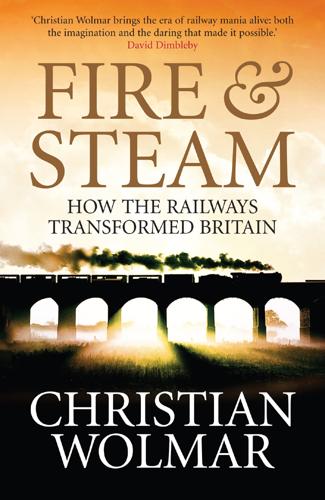
Fire and Steam: A New History of the Railways in Britain
by
Christian Wolmar
Published 1 Mar 2009
Because the mergers had taken place voluntarily, albeit under pressure of the Act, they were largely completed by the beginning of 1923, six months ahead of the official deadline. Eric Geddes, meanwhile, a man who had cut his teeth on the railways and steered through the legislation, left them to their own devices, perhaps sensing that the future of transport lay elsewhere. He went off first to a directorship in the motor industry, with Dunlop, and then into aviation, becoming chairman of Imperial Airways, the precursor to British Airways. The only significant railways to be left outside the system were the Metropolitan and the London Electric Railway, which in 1933 became part of the London Underground, and a few joint lines that had been operated by more than one company.
…
Copyright © Christian Wolmar 2007 The moral right of Christian Wolmar to be identified as the author of this work has been asserted in accordance with the Copyright, Designs and Patents Act of 1988. All rights reserved. No part of this publication may be reproduced, stored in a retrieval system or transmitted in any form or by any means, electronic, mechanical, photocopying, recording or otherwise, without the prior permission of both the copyright owner and the above publisher of this book. Every effort has been made to trace or contact all copyright-holders. The publishers will be pleased to make good any omissions or rectify any mistakes brought to their attention at the earliest opportunity. 9 8 7 6 5 4 3 2 1 A CIP catalogue record for this book is available from the British Library. 978 1 84354 629 0 ePub ISBN: 978 1 84887 261 5 Mobi ISBN 978 1 84887 261 5 1851 railway network map © Jeff Edwards All other maps © Mark Rolfe Technical Art Printed in Great Britain Atlantic Books An imprint of Grove Atlantic Ltd Ormond House 26–27 Boswell Street London WC1N 3JZ Dedicated to my wonderful children, Molly Brooks, Pascoe Sabido and Misha MccGwire, even though they think I am a mad trainspotter, and to the Railway Children, the charity that helps less fortunate children around the world (www.railwaychildren.org.uk).
…
Most deaths and injuries, however, were due to passengers’ own mistakes or foolishness, often occasioned by drunkenness. One man tried to walk on the rail as if it were a tightrope and, fatally, did not notice a train coming up behind him. Similarly, in 1833, three passengers walked up and down the line impatiently waiting for their service, failing to see a train approaching in the other direction which killed them. Others died or were injured while standing up in the uncovered carriages or jumping off the train while in motion or, as still happens regularly today, trespassing on the tracks. There was even the odd bit of hooliganism, with people throwing stones or leaving timbers on the line, a phenomenon which, again, survives to this day.
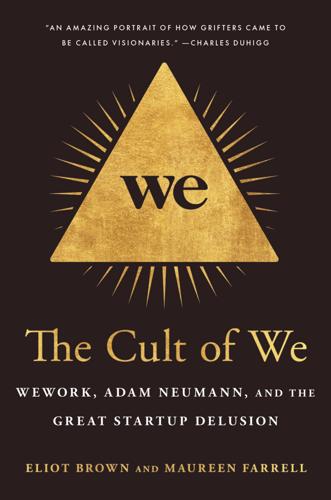
The Cult of We: WeWork, Adam Neumann, and the Great Startup Delusion
by
Eliot Brown
and
Maureen Farrell
Published 19 Jul 2021
The dominant thesis of the era—that giant losses didn’t matter so long as companies had big vision and revenue growth—suddenly looked naïve. The public markets, it turned out, wanted real businesses, not dreams. It was also true for Uber, the most hyped startup of the past decade, which had once seemed unstoppable and had been hailed as the future of transportation—something that would replace mass transit, personal cars, and even some walking. It hemorrhaged billions recruiting drivers and subsidizing rides in the name of continued growth, and nine months earlier its backers and bankers thought its valuation could soar past $100 billion. But by the time of Neumann’s resignation, investors had a more sober view.
…
Sitting across from the towering, long-haired, smiling man in jeans and a T-shirt, they were taken aback by Neumann’s panache. Spending an hour or two with Neumann was incomparable to any typical real estate meeting. Even before noon, he offered shots from the tall brown Don Julio 1942 tequila bottle he kept behind his desk. He dropped the names of actors like Ashton Kutcher or mayors like Rahm Emanuel of Chicago. Other times Rebekah and his two young daughters would pop in during a meeting—hugging him or running around his office. He was a fun family man—warm, brimming with hope and positivity—but he also had an air of brilliant business savvy to his pitch.
…
Ellenbogen was so impressed by the rapid growth that he boasted to The Wall Street Journal that anyone who saw WeWork’s finances would “compare it to a brand or tech company—maybe Chipotle or Uber.” Uber had become red hot, with its valuation soaring to $41 billion by the end of 2014, making it the most valuable private, venture-backed startup in the United States. Baker, energetic and competitive, had long been frustrated that Fidelity wasn’t competing for all the same deals as T. Rowe. He fired off an email to Fidelity’s private markets team, asking them why he hadn’t seen the company’s pitch or met the CEO. Fidelity, he believed, needed to be out there on the same field as its competitors, scooping up the hottest startups in Silicon Valley as they hunted for new investments.
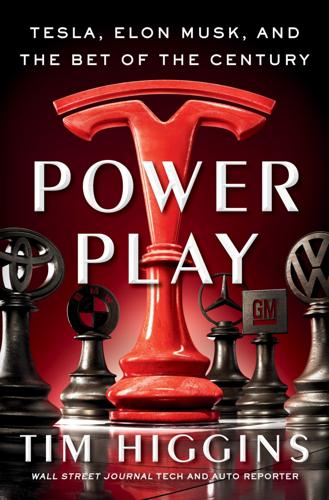
Power Play: Tesla, Elon Musk, and the Bet of the Century
by
Tim Higgins
Published 2 Aug 2021
They had to build out a small network of stores. They needed to focus on getting the car reliable, root out engineering problems, deliver parts to the factory in the UK. “Focus on Job No. 1,” he told them. All of their jobs were at stake, not to mention “the viability of electric cars” and the “future of transportation.” If that message wasn’t clear enough, he sent the team a follow-up email shortly afterward. “[GM CEO] Rick Wagoner said last November that now is a turning point for the automobile—that the change from internal combustion drive to electric drive is as significant as the change from horses to horsepower.
…
Many of us might misunderstand or underestimate Tesla’s endgame. They might see the car as a toy for the green-conscious family down the block with money to burn, or for the status-inclined hedge funder with the progressive air. Or else it’s the new Ferrari for the walking midlife crisis who just parked next to you at the train station. But these niche existences? These are decidedly not what Tesla is about. And that is why the fate of the company rides on the Model 3, the electric car for the masses. As one Wall Street banker lamented years ago, “Either they become a niche manufacturer like Porsche or Maserati and make 50,000 high-end cars annually, or they crack the code on a $30,000 car that would put them on the inflection point of a large industrial.”
…
Straubel didn’t look like a mad scientist intent on changing the world; he had a quietness about him and the bland good looks of a midwestern frat boy. But inside, he had a gnawing desire to do more than take a job with friends at a startup like Google or join the bureaucracy of a Boeing or General Motors. He wanted to create something that changed everything, whether it was in a car or an airplane; he wanted to chase a dream. Stanford’s team, like its competitors, had designed a car that ran on energy it collected from the sun using solar panels. Small batteries stored some of that energy—for use at night, or else when the sun was obscured by clouds. It being a solar race, however, organizers placed limits on how batteries could be used.
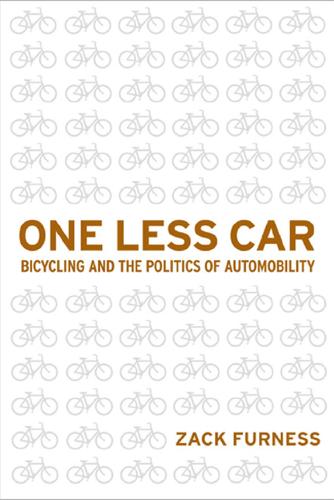
One Less Car: Bicycling and the Politics of Automobility
by
Zack Furness
and
Zachary Mooradian Furness
Published 28 Mar 2010
Decelerating City Traffic 100 Percent One of the points i emphasized in this book is that bicycles are not the solution to transportation problems just as any technological fix is incapable of solving problems that are hardly reducible to technology in the first place. nevertheless, the shifting geopolitical, ecological, and economic landscapes require us to think more concretely and indeed more pragmatically about the vast potential of bicycles and pedal-powered technologies in the twenty-first century. One of the major obstacles preventing a more rigorous analysis of the future of transportation is the virtual invisibility of non-motorized technologies as a real alternative among even the most critical thinkers who write on the politics of oil, environmentalism, and/or climate change. Of the plethora of books devoted to these subjects in recent years, one is still hard pressed to find more than a cursory discussion or token reference to non-motorized transportation despite the obvious prospects that bicycles and other pedal-powered technologies—such as pedal cars, recumbent bicycles, tricycles, and pedicabs—pose for the United States and for much of the world’s population who dwell in dense urban centers, small towns, or villages where an automobile infrastructure is either economically unfeasible, culturally undesirable, or geographically impossible.
…
This might ultimately be one of the reasons why people are “more prone to bicycle as a result of their experience” and why Critical Mass consistently attracts participants throughout the world.122 For people who are already interested in cycling or deeply invested in some facet of bike culture, the value of Critical Mass is not contingent on what it necessarily says to the public as much as it “benefits those who take part in it.”123 Sharing a collective experience with a group of fellow cyclists can be a profound moment for a biker, particularly one who is unaffiliated with, or uninterested in, formal cycling organizations, clubs, or traditional cycling events. it can serve as an introduction to a larger community of cyclists just as it can affirm, renew, or develop a person’s commitment to bicycling or her or his identity as a cyclist. ayleen Crotty, a veteran bike advocate and co-host of the Bike Show on KBOO radio in portland, succinctly highlights this quality: “Some cities need CM to bring cyclists together. at its best, it is a forum for cyclists to meet, feel supported, and feel elated.
…
Olin Foundation (chemicals and munitions), the Scaife Foundations (Gulf Oil, banking and newspapers), and the Koch Family Foundations (oil and gas).126 Media scholars and watchdog groups have long criticized the institutional biases of the corporate news industry precisely because these sorts of organizations radically alter, if not dictate, the terms of debate on public issues like transportation. as trusted sources of information, corporate news fundamentally propagates the “ideology of the motorcar” by legitimizing the most radical supporters of automobility through a process that effectively repackages their agenda as centrist.127 Critiques of automobility are subsequently framed as political and/or antagonistic to the status quo, regardless of whether the context justifies or even compels such criticism—a good example being the one thousand-plus new york City pedestrians annually struck by automobiles on the sidewalk or inside their homes.128 Systemic and/ or politically motivated critiques of automobility, like those espoused and/or performed by reclaim the Streets and Critical Mass, are therefore subject to the same categorical skepticism bestowed on other forms of dissenting political speech.129 These patterns ultimately reify, or make concrete, an ideology that is simultaneously at work in the relentless spectacle of auto advertising and embedded within the everyday realities of car culture.
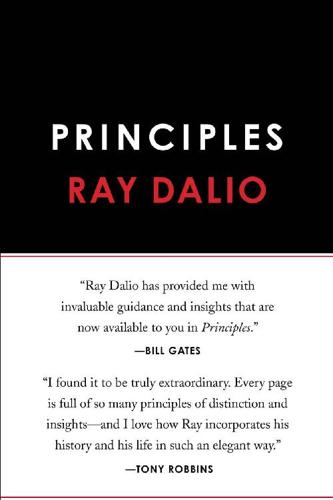
Principles: Life and Work
by
Ray Dalio
Published 18 Sep 2017
All are able to see both big pictures and granular details (and levels in between) and synthesize the perspectives they gain at those different levels, whereas most people see just one or the other. They are simultaneously creative, systematic, and practical. They are assertive and open-minded at the same time. Above all, they are passionate about what they are doing, intolerant of people who work for them who aren’t excellent at what they do, and want to have a big, beneficial impact on the world. Take Elon Musk. When he had just come out with the Tesla and showed me his own car for the first time, he had as much to say about the key fob that opened the doors as he did about his overarching vision for how Tesla fits into the broader future of transportation and how impor-tant that is to our planet.
…
When explaining these things, I’ve adopted some conventions, such as describing the amygdala as the sole cause of emotional flight-or-fight reactions, even though the exact neuroanatomy is more complex. I’ll cover this in more detail in the following chapter. 26 One way to do this is by asking questions like “Would you rather I be open with my thoughts and questions or keep them to myself?”; “Are we going to try to convince each other that we are right or are we going to open-mindedly hear each other’s perspectives to try to figure out what’s true and what to do about it?”; or “Are you arguing with me or seeking to understand my perspective?” 27 Psychologist and science journalist Daniel Goleman originally coined this term in Emotional Intelligence. 28 Some of this may be a result of what is called the Dunning-Kruger effect, a cognitive bias in which low-ability individuals believe that they are in fact superior. 4 Understand That People Are Wired Very Differently Because of the different ways that our brains are wired, we all experience reality in different ways and any single way is essentially distorted.
…
It is helpful to identify easy ways of sharing, like open emails posted on an FAQ board or sending around videotapes or audio recordings of key meetings. (I call such approaches “leverage.”) The challenges become greater the higher you go in the reporting hierarchy because the number of people affected by your actions and who also have opinions and/or questions grows so large. In such cases, you will need even greater leverage and prioritization (for example by having some of the questions answered by a well-equipped party who works for you or by asking people to prioritize their questions by urgency or importance). 4.5 Great collaboration feels like playing jazz.

Physics of the Future: How Science Will Shape Human Destiny and Our Daily Lives by the Year 2100
by
Michio Kaku
Published 15 Mar 2011
You place the ceramic in a plastic dish and gently pour the liquid nitrogen over it. The nitrogen starts to boil furiously as it hits the ceramic. Wait until the nitrogen stops boiling, then place a tiny magnet on top of the ceramic. Magically, the magnet floats in midair. If you tap the magnet, it starts to spin by itself. In that tiny dish, you may be staring at the future of transportation around the world. The reason the magnet floats is simple. Magnetic lines of force cannot penetrate a superconductor. This is the Meissner effect. (When a magnetic field is applied to a superconductor, a small electric current forms on the surface and cancels it, so the magnetic field is expelled from the superconductor.)
…
This could radically change the workplace, commerce, entertainment, and our way of life. Augmented reality would have immediate consequences for the marketplace. The first commercial application would be to make objects become invisible, or to make the invisible become visible. For example, if you are a pilot or a driver, you will be able to see 360 degrees around yourself, and even beneath your feet, because your goggles or lens allow you to see through the plane’s or car’s walls. This will eliminate blind spots that are responsible for scores of accidents and deaths. In a dogfight, jet pilots will be able to track enemy jets anywhere they fly, even below themselves, as if your jet were transparent.
…
(photo credit 2.1) But when you enter the USC lab, you see something quite different. You see boxes of cubical modules, each about 2 inches square, that can join or separate, allowing you to create a variety of animal-like creatures. You can create snakes that slither in a line. Or rings that can roll like a hoop. But then you can twist these cubes or hook them up with Y-shaped joints, so you can create an entirely new set of devices resembling octopi, spiders, dogs, or cats. Think of a smart Lego set, with each block being intelligent and capable of arranging itself in any configuration imaginable. This would be useful for going past barriers.
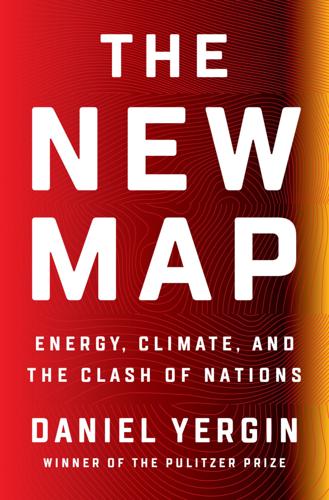
The New Map: Energy, Climate, and the Clash of Nations
by
Daniel Yergin
Published 14 Sep 2020
Whatever the name, the larger companies are increasing investment in new technologies, start-ups, and “low-carbon energy” and are bolstering internal R&D. The aims are multiple: to be more efficient, to meet environmental pressures and investor and regulatory requirements, to “solve” carbon, to participate in renewables and new technologies, to develop economic carbon capture, to play in the future of transportation, to be part of the digital economy, to ensure optionality, and to preserve their “license to operate.” They are investing with the “energy transition” in mind—in batteries, in fast charging for electric vehicles, in hydrogen, in wind farms and solar developers, even in fusion. There is a new emphasis on carbon capture.
…
* * * — Many forecasts have been made for the electric car over the last several years. Some have been very optimistic compared to what has actually happened, and what will happen.31 The electric car may appeal to buyers in terms of its “coolness” or “newness” or status or because it delivers a message about climate change or values or brand or because of the quality of the vehicle and the fact that it can go from zero to 60 in four seconds. Or because buyers receive financial or regulatory incentives from governments. But it is not clear how the overall utility of the electric car, on its own, is superior to that of the gasoline car. The electric car is still a car.
…
Actual drilling time itself was shortened to as little as five or six days. A single well that might have cost $15 million a year or two earlier might now cost all of $7 million. Of course, because of the high depletion rates of shale, the producer needed to continually drill new wells. This was in contrast to long cycle—an offshore oil or LNG project that could take five to ten years to bring on, but then would produce for many years. Instead of $7 million, a long-cycle offshore project would cost $700 million or $7 billion—or much more. Many long-cycle projects were launched or planned during the BRIC era, with the confidence that $100 a barrel was the “new normal.”

The Unwinding: An Inner History of the New America
by
George Packer
Published 4 Mar 2014
In the nineteenth century, rail was the future of transportation, the engine of American wealth. In the twentieth century it was a boring topic for public policy and budget experts. In 2010 it symbolized everything that the American right feared and hated—big government, taxes and spending, European-style socialism, a society in which people were forced to share public services with strangers and pay for them. Rail was a threat to the lifestyle of New Tampa, where the line was supposed to end. In New Tampa you drove to the supermarket once a week (instead of walking or taking the bus every day like in the city), then loaded up the minivan at Home Depot on weekends.
…
Across El Camino Real, the Stanford Shopping Center was dominated by Macy’s, Emporium, and Woolworth’s; in 1977 Victoria’s Secret opened a shop, but there was no Williams-Sonoma or Burberry, no upscale boutiques at all. The parking lot was full of Pintos and Datsuns. Almost all the children in the Valley, even ones from the few wealthy families, went to local public schools, and they were good schools—California was ranked number one in the country. The best students went on to Berkeley, Davis, or UCLA (a few made it to Stanford or the Ivies), the average ones went to San Francisco State or Chico State, and the burnouts and heads could always get a two-year degree at Foothill or De Anza. The tax revolt—Proposition 13, a referendum that would limit property taxes in California to 1 percent of assessed value, sending the state’s public schools into a long decline—was still a year away.
…
He realized that some people had to be willing to give up their lives in order to protect their way of life. He read Toynbee and Asimov, and his mind filled with visions of civilization in decay. It could happen to America. He decided that he would not be a zoo director or paleontologist after all. His future was in politics. Not as county administrator, or chairman of the transportation committee, or secretary of defense, or even just as president. He was going to be a Great Leader of his people. The models were Lincoln, Roosevelt, and Churchill. (There would be a fourth, but he was still an ex-actor hosting General Electric Theater when Newt walked around Verdun.)